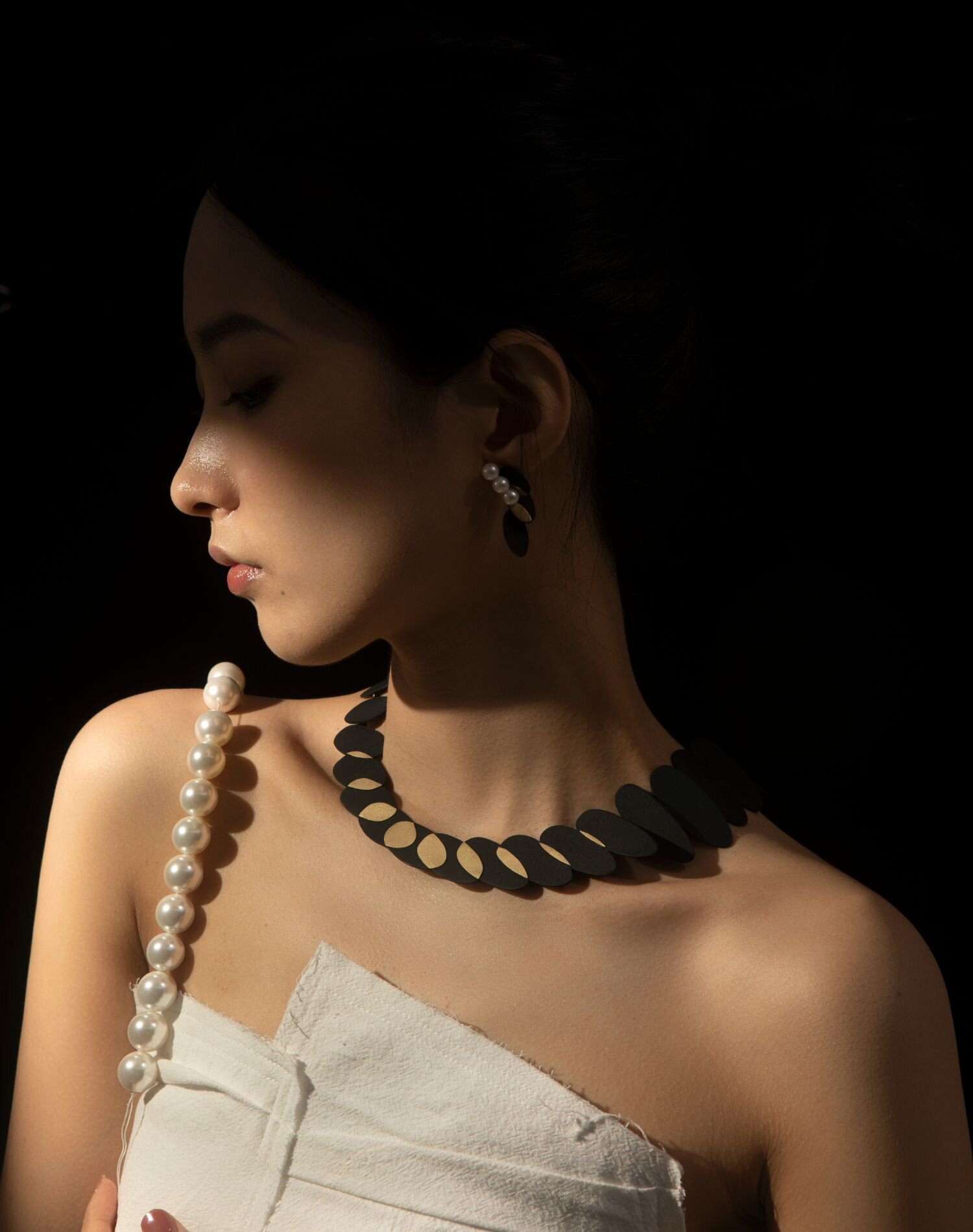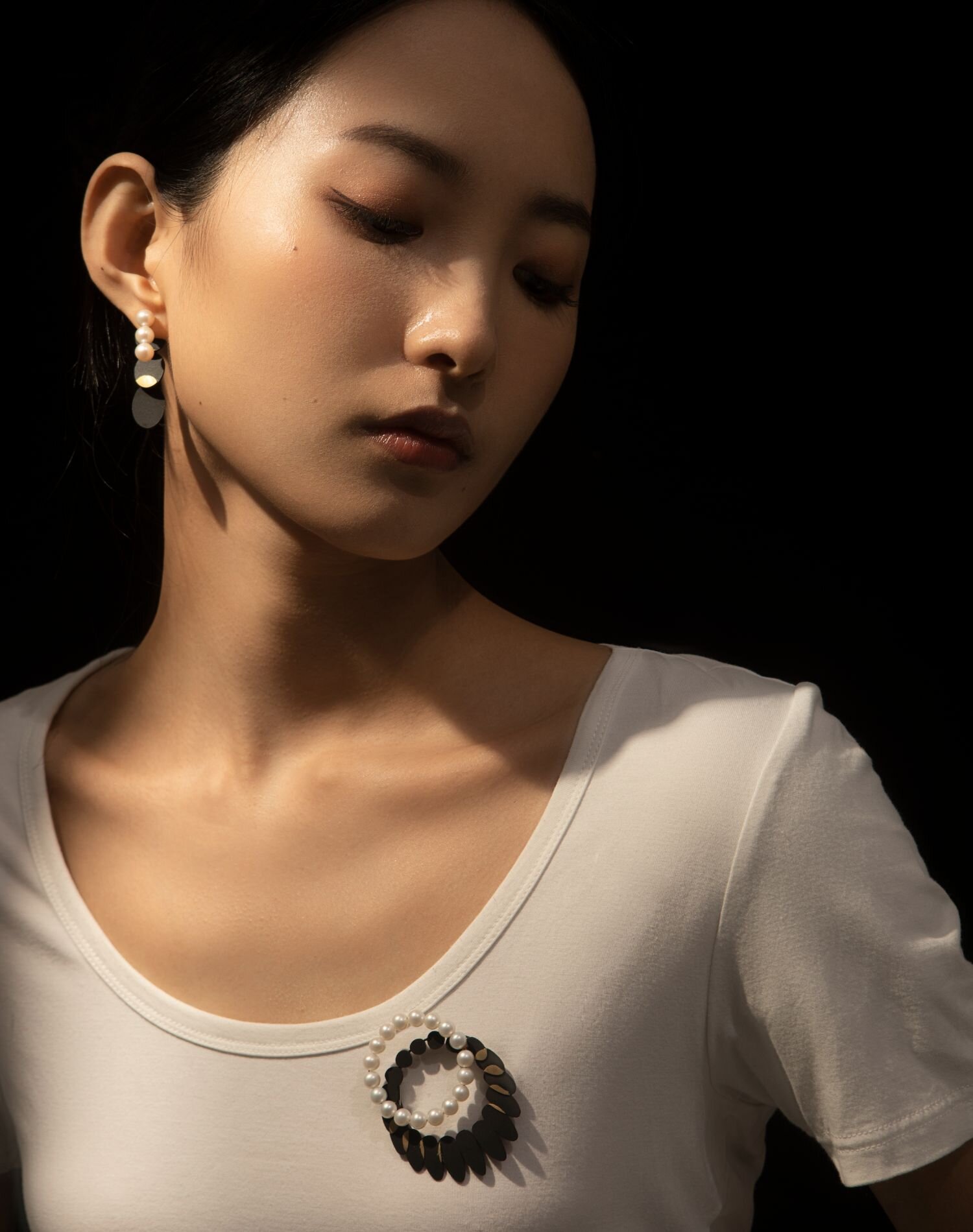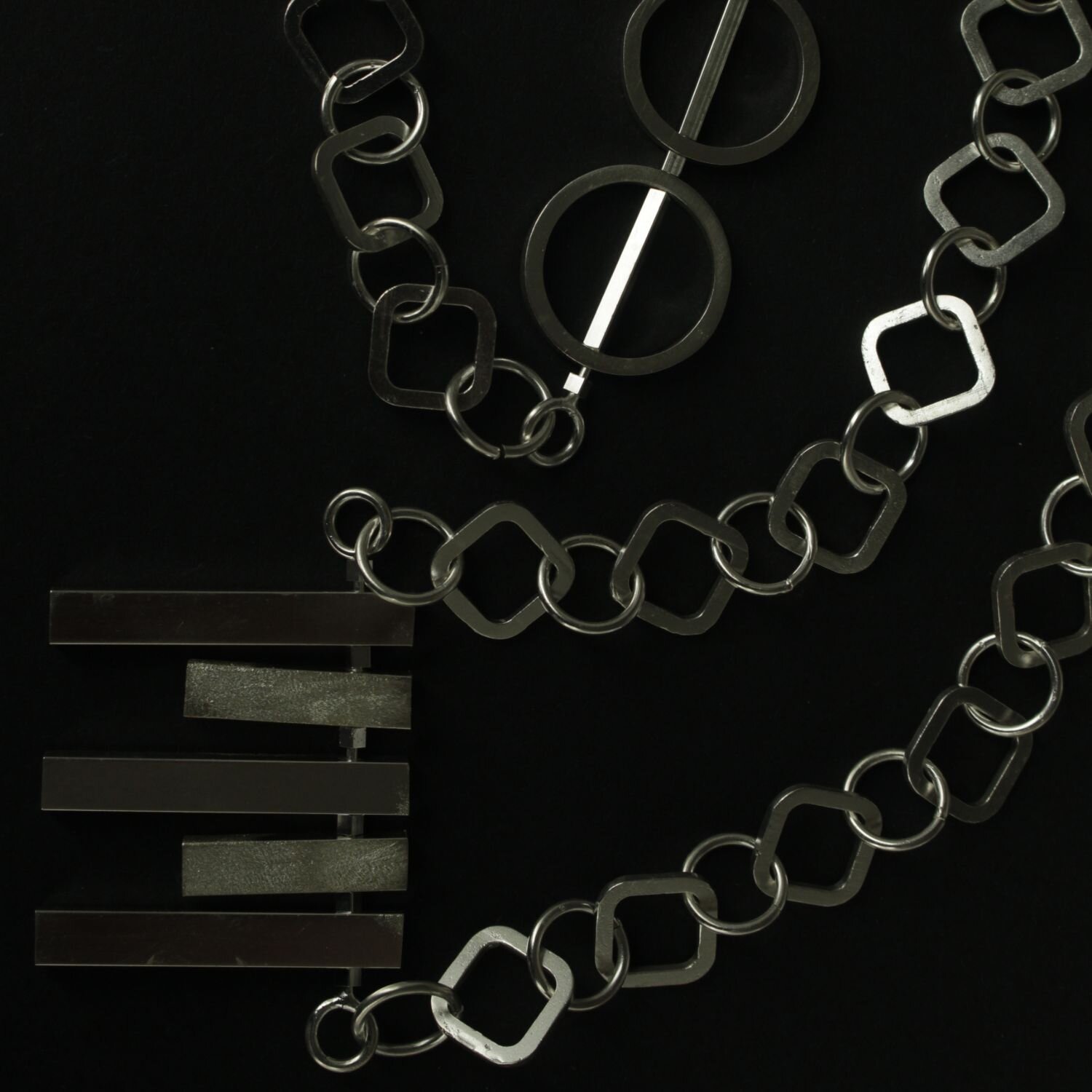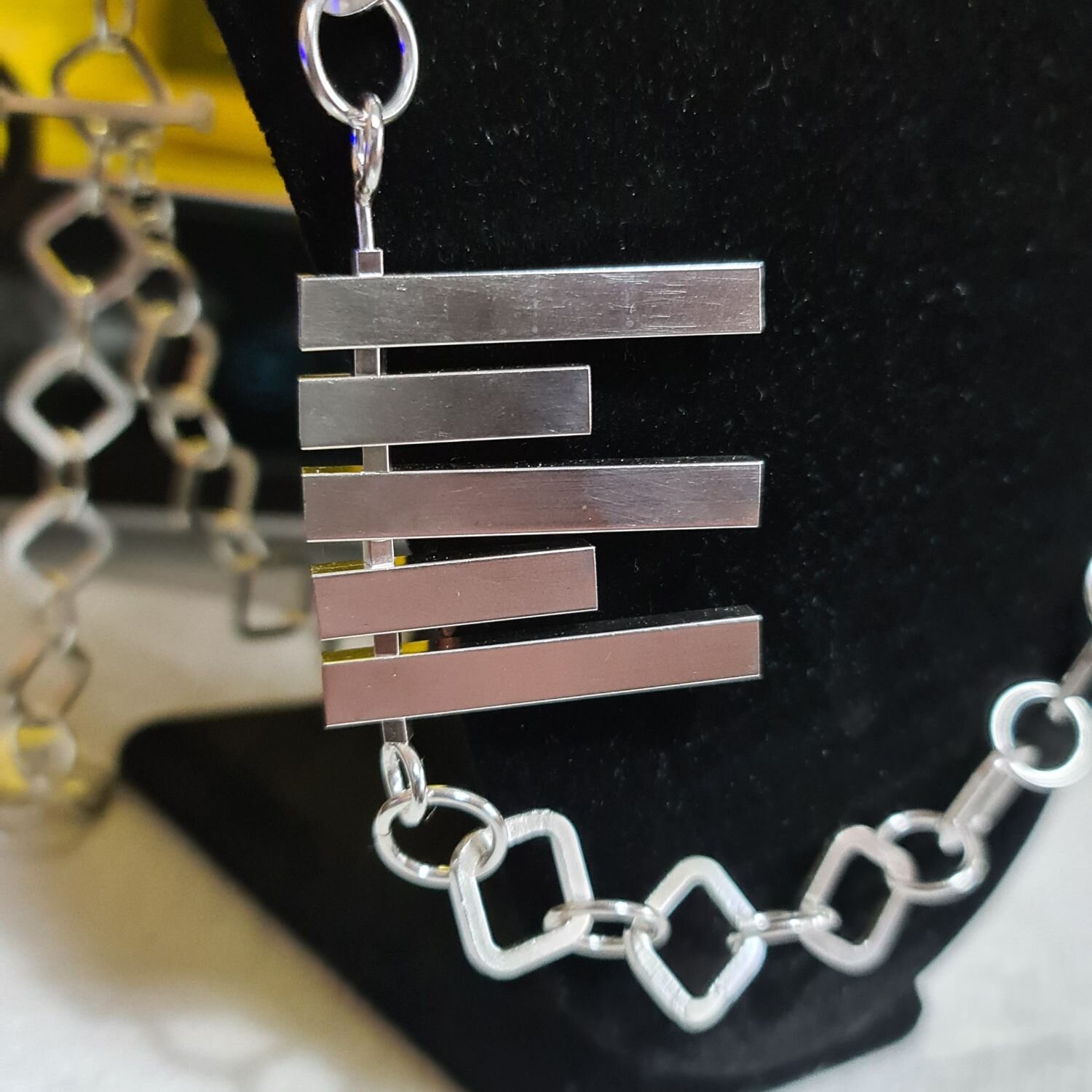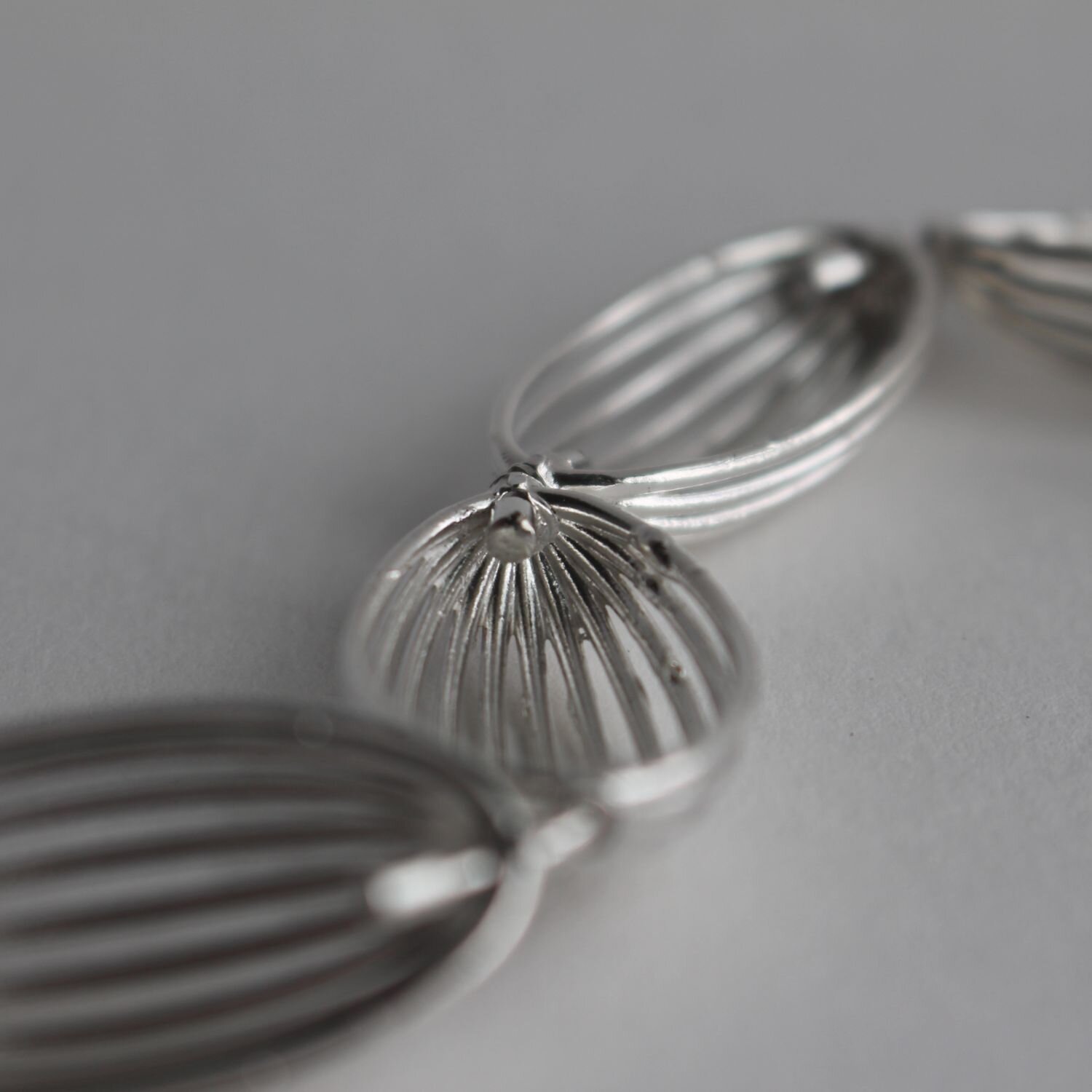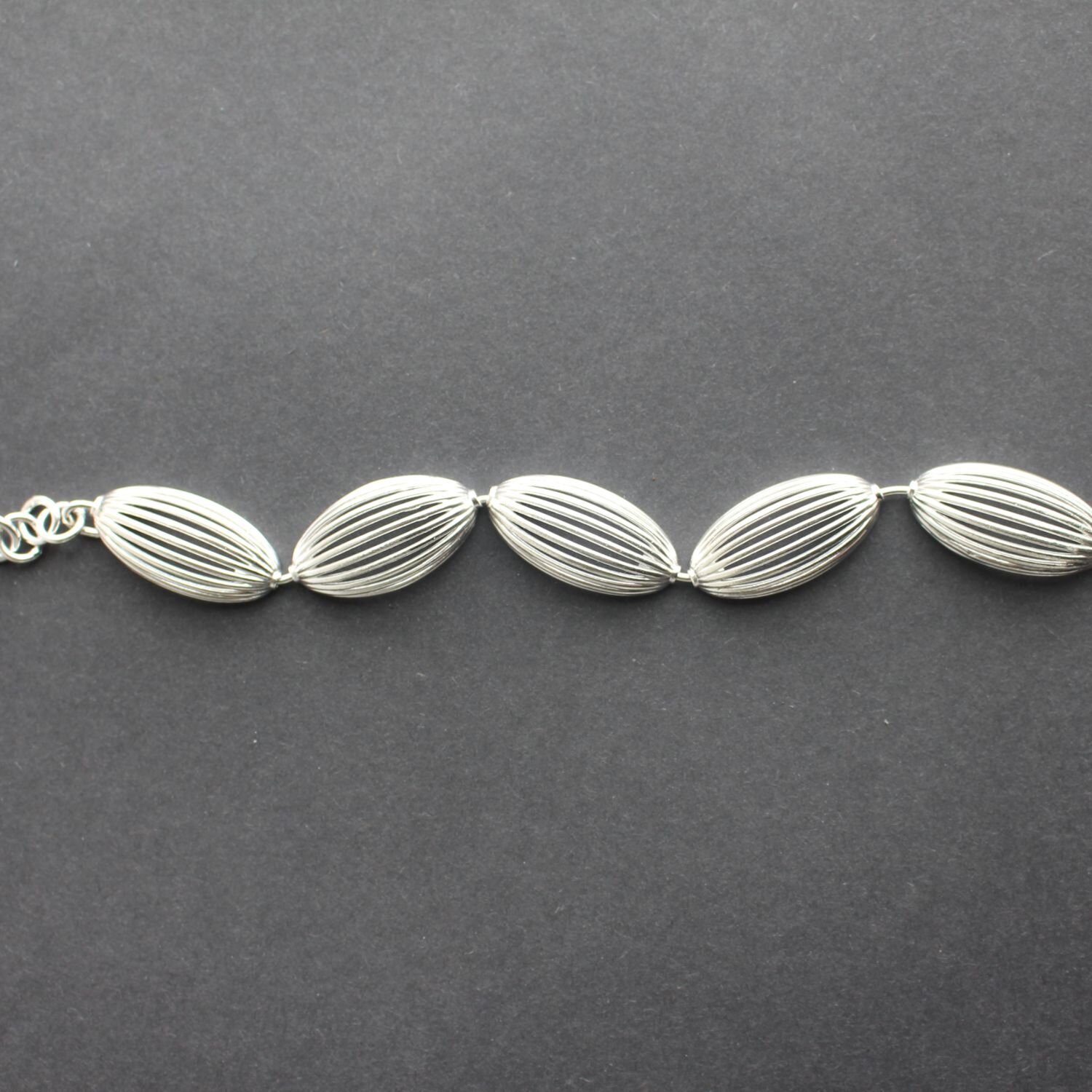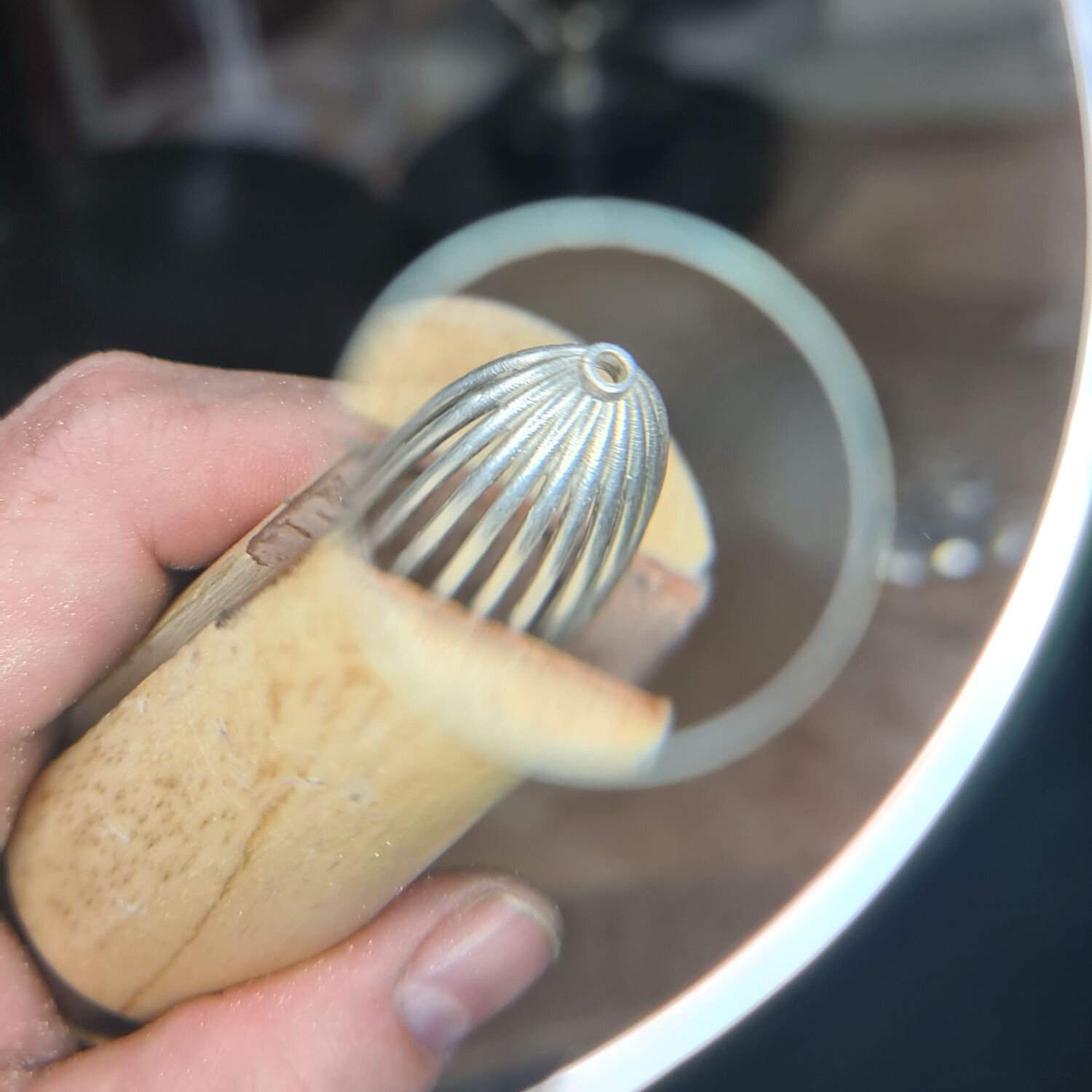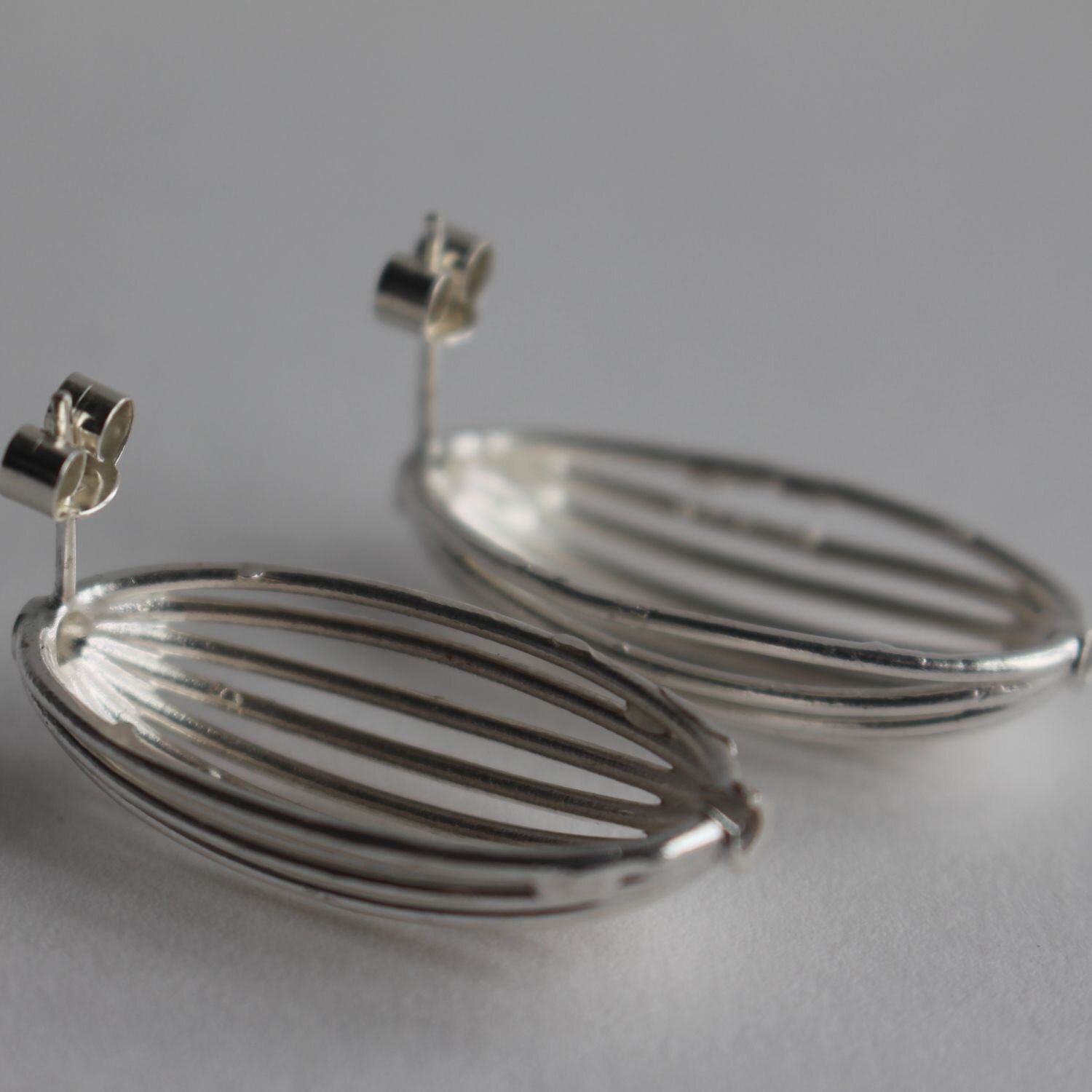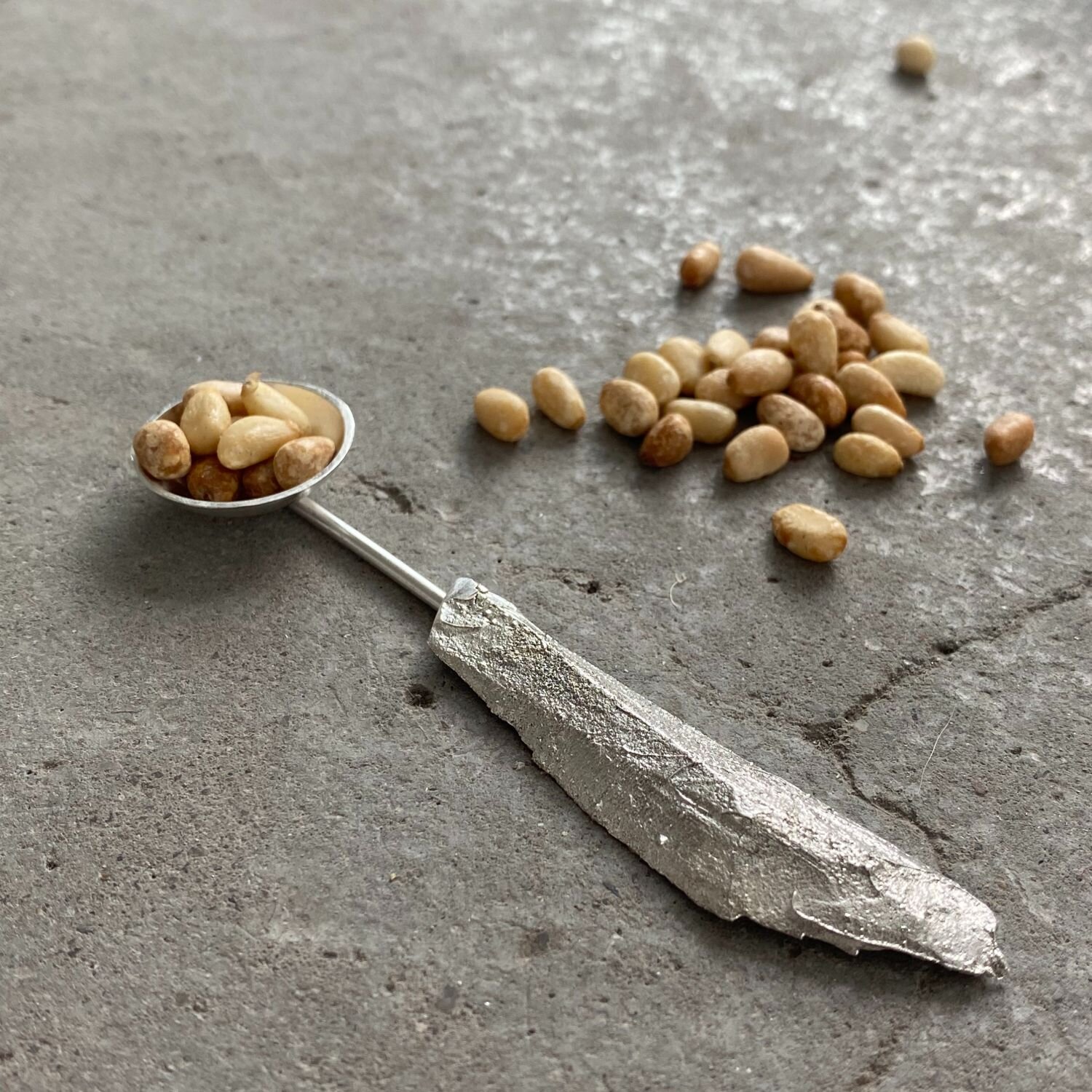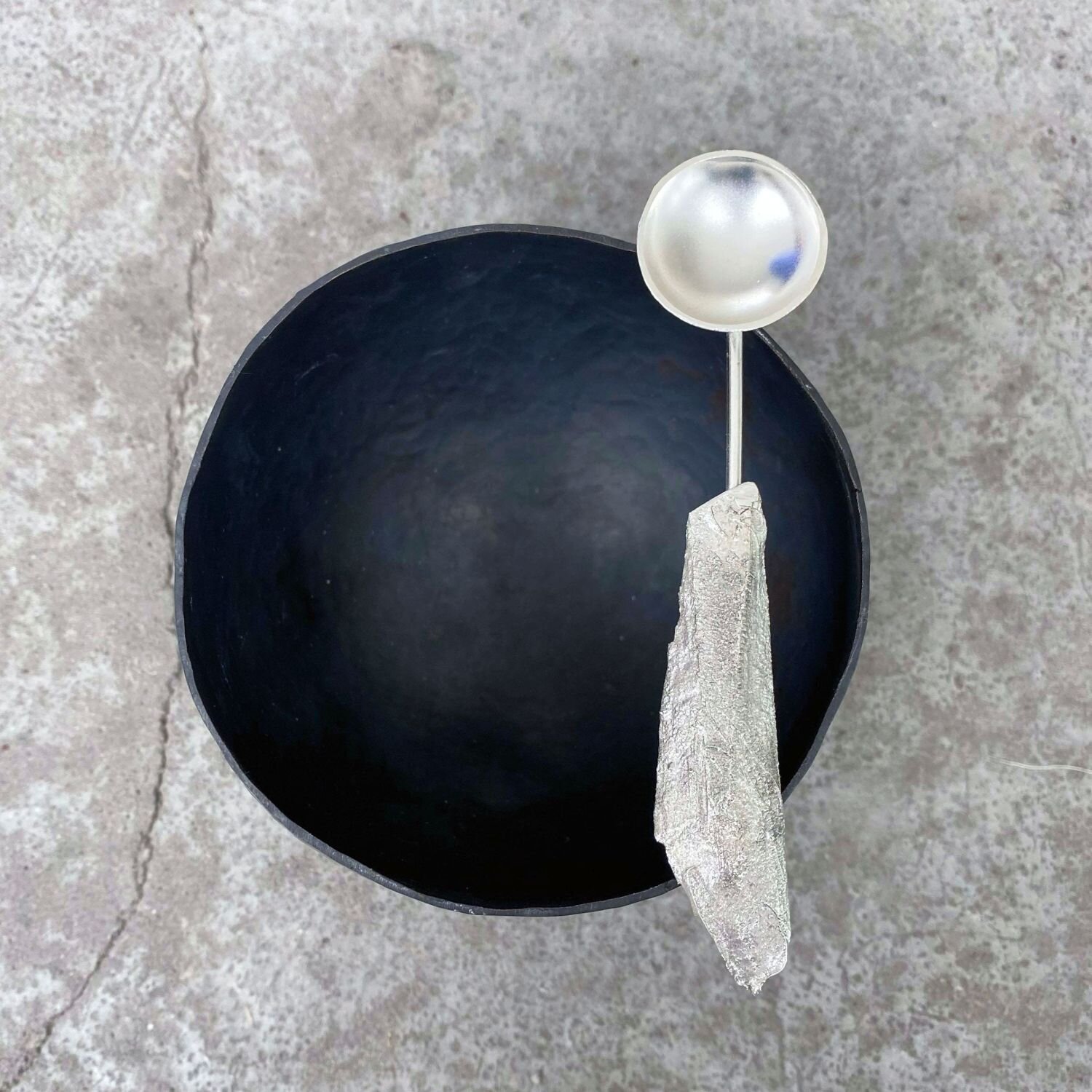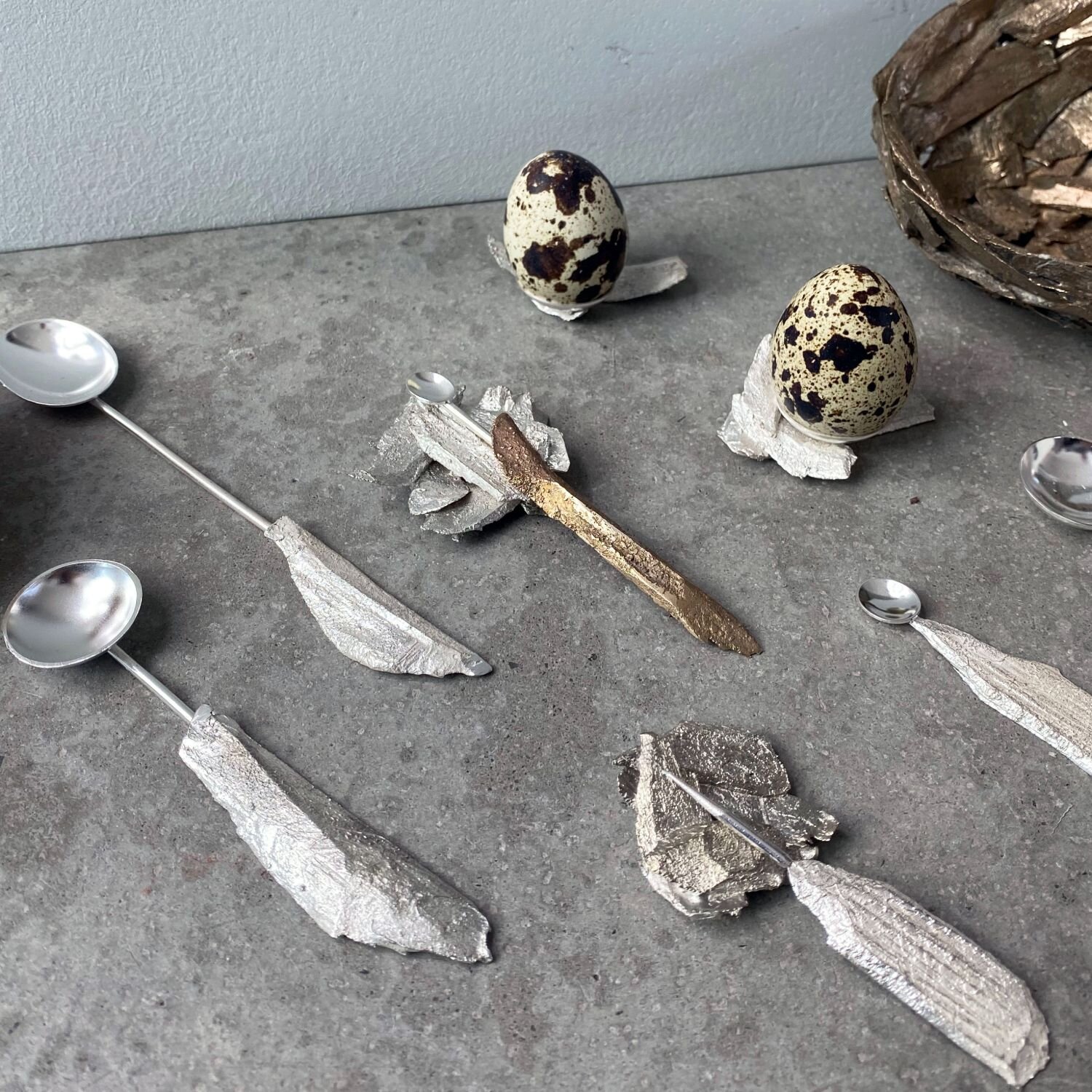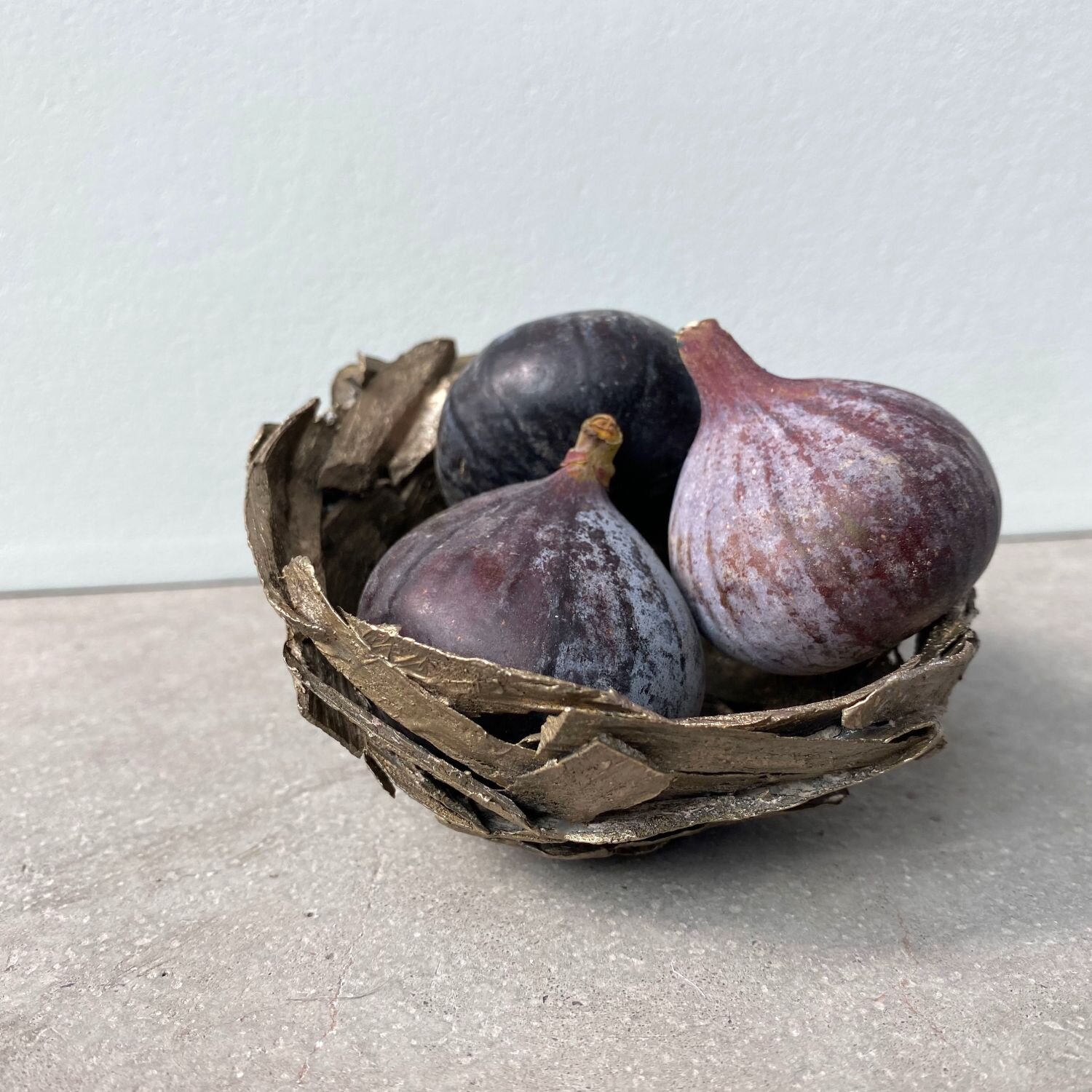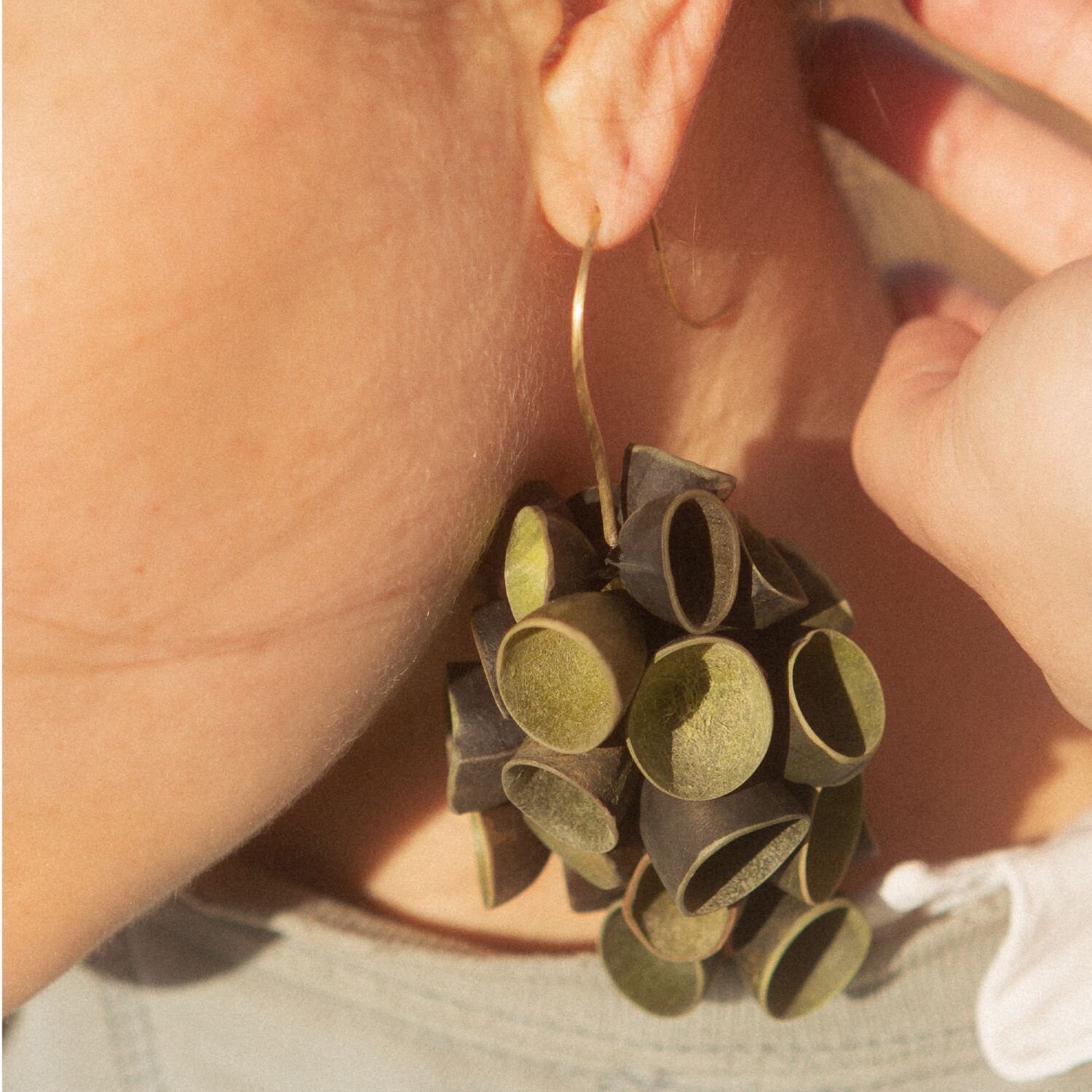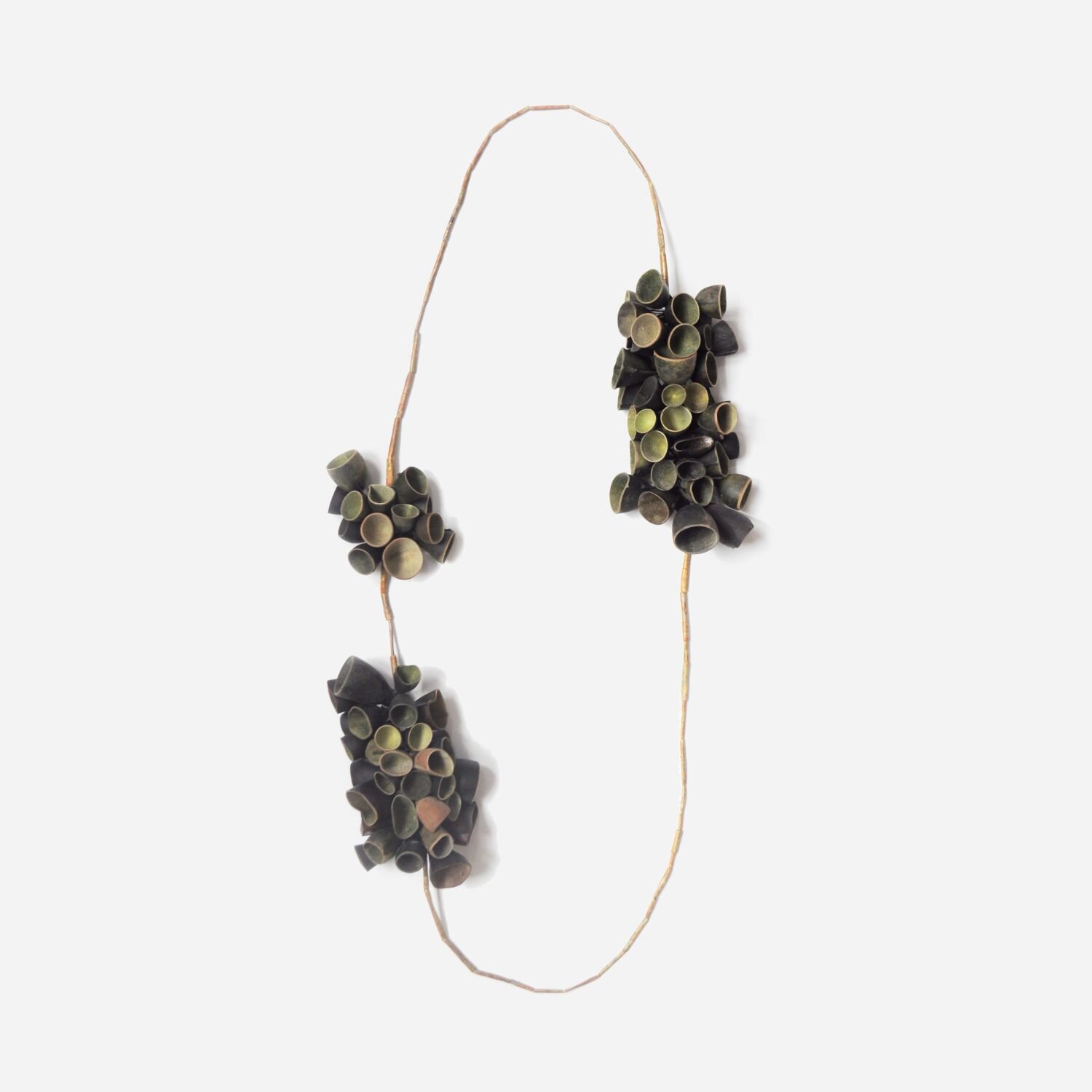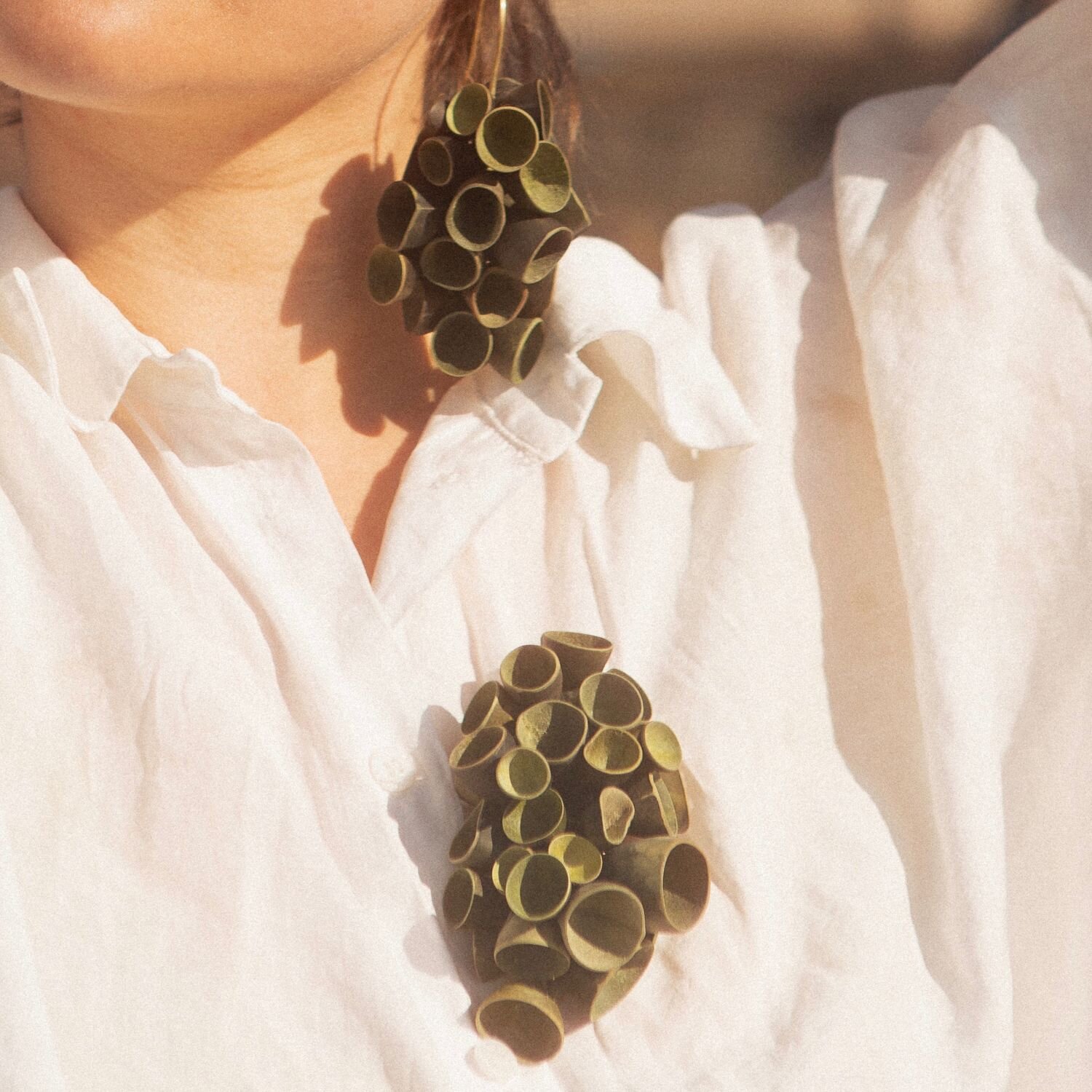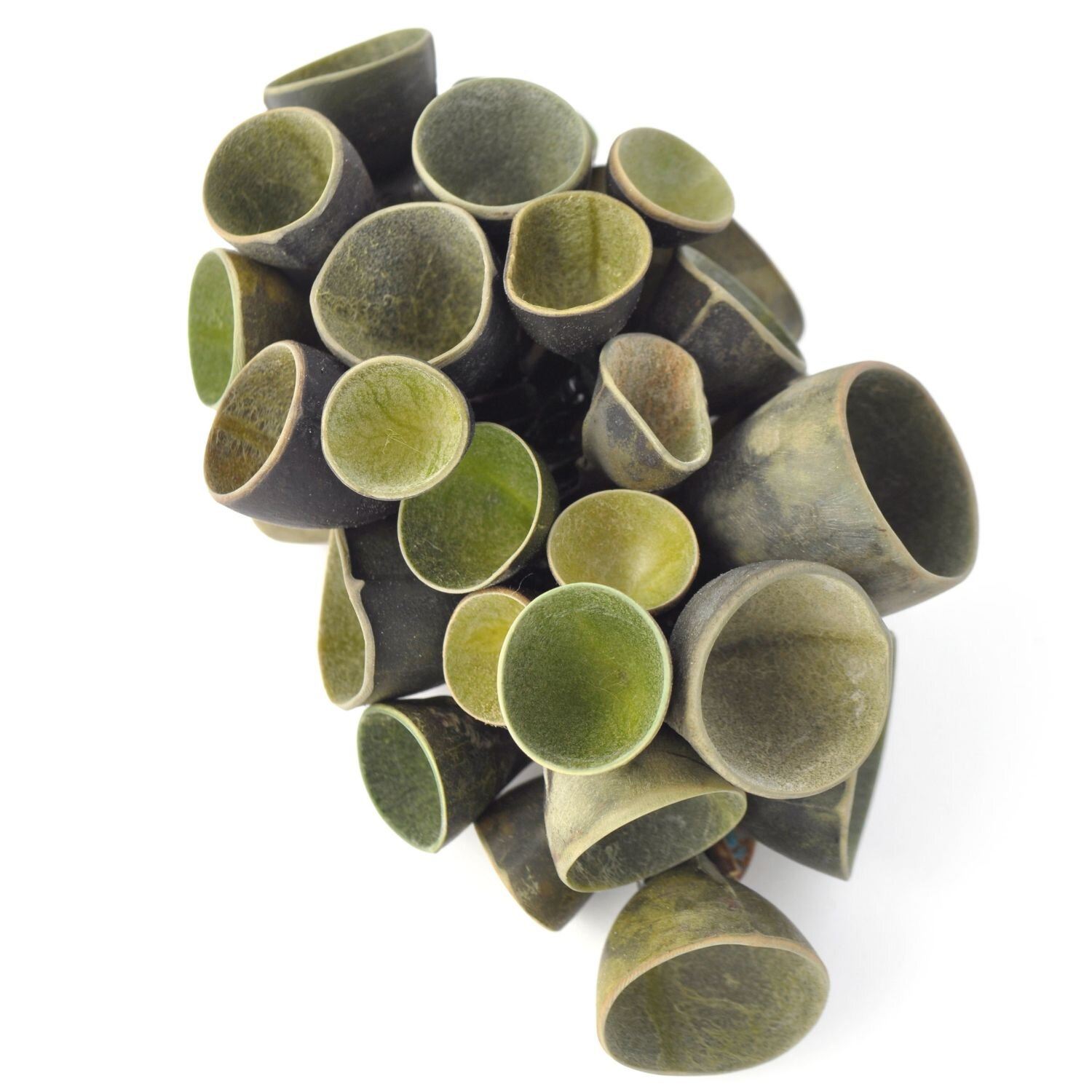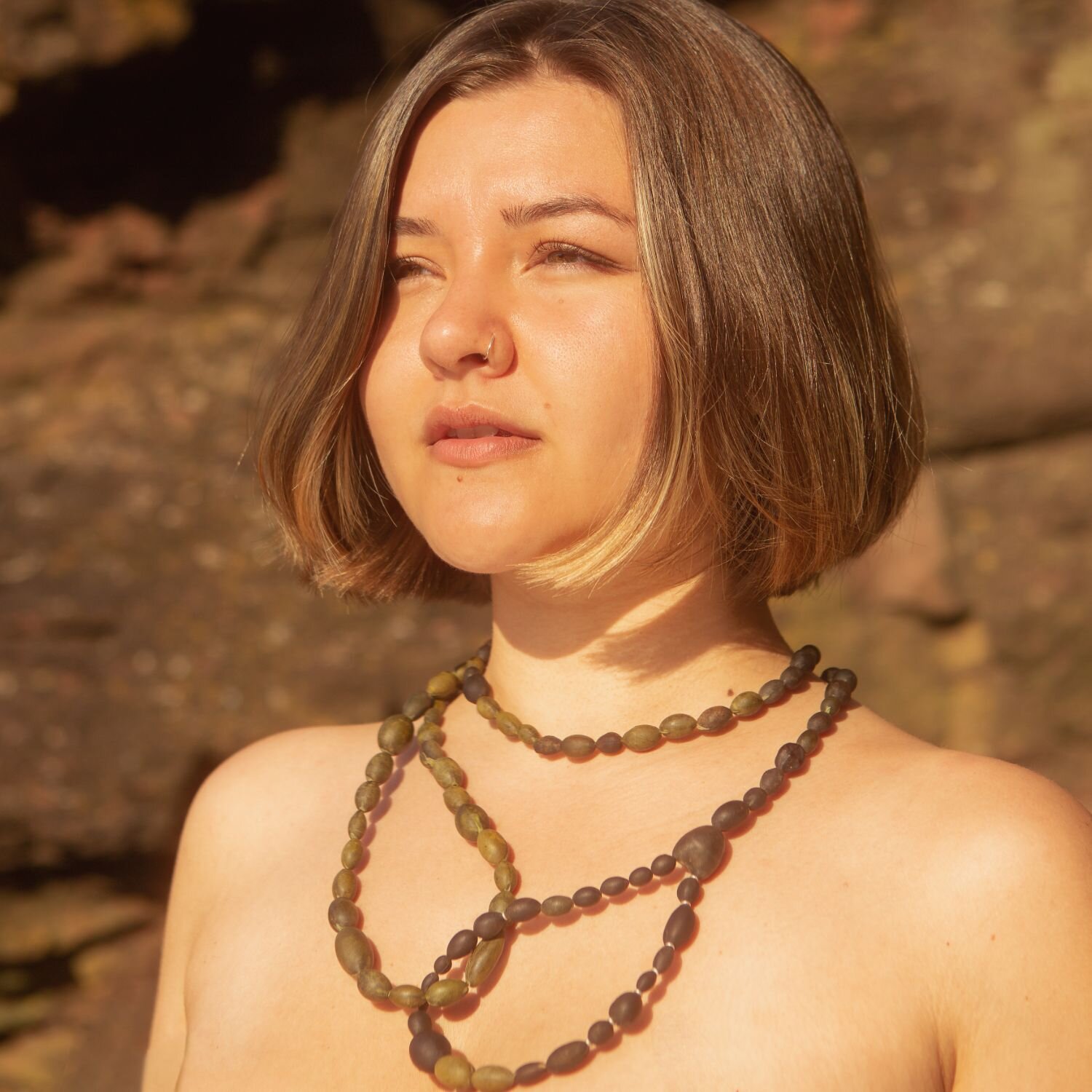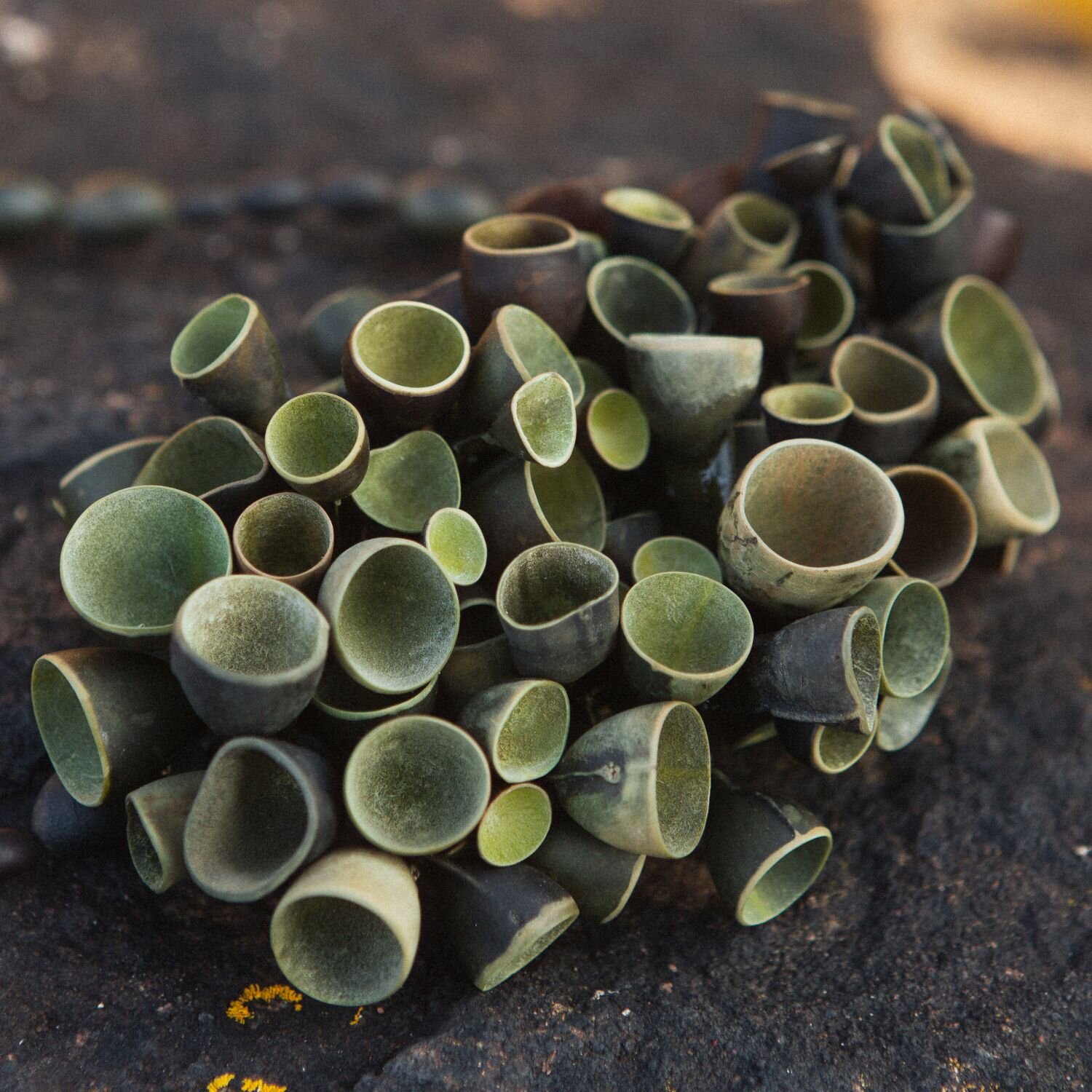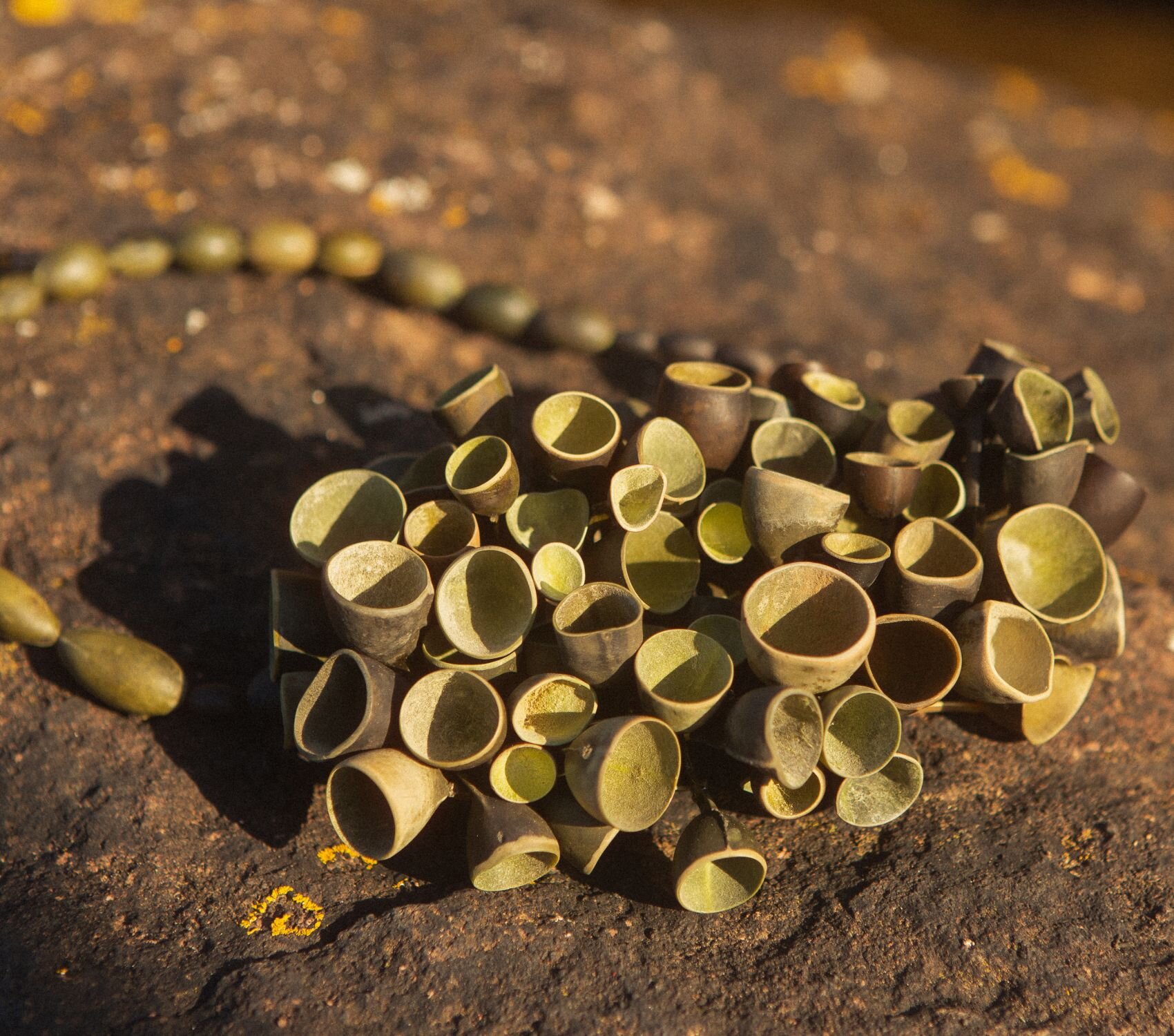2021: The Graduate Showcase
For our 2021 Elements Exhibition, The Scottish Goldsmiths Trust and Lyon & Turnbull are delighted to present the Graduate Showcase (online only).
In this unprecedented time, we wanted to support this year’s Jewellery and Silversmithing graduates by giving them a platform to introduce their work to the Elements audience. Ten graduates from across Scotland have been selected to showcase here, shining a spotlight on their hard work, innovative designs and excellence in craftmanship. We invite you to join us in celebrating this work and follow these talented new makers as they develop their practice.
‘The breadth of talent and skill is clearly apparent in this year’s Graduate Showcase, with inspiration ranging from Ancient Greek Deities to archaeology to oceanography. Many of the new graduates are making work that responds to themes of sustainability, climate change and reducing consumption. Another theme is that of meditative practice, something many people have found beneficial through the pandemic lockdowns, taking time to create with a focus on process. There are playful, tactile pieces inspired by childhood play and those that use light and shadow to create new forms and sensory experiences. We encourage you to take time to read and explore this showcase, contact details are listed so please do get in touch, follow on social media and show your support for these incredible new Jewellers and Silversmiths.’
Ebba Goring, Chief Executive of the Scottish Goldsmiths Trust
Iris Qu
Edinburgh College of Art, BA Jewellery and Silversmithing
Kinetic Brooch 1
Sterling Silver, Titanium and Stainless Steel
Iris’s graduate collection is inspired by her childhood experience of collecting glass marbles from Ramune.
From a child’s perspective, marbles in bottles are precious gems trapped in treasure boxes; play park facilities are castles, war ships, battle grounds. Iris discovered some similarities between these two things. Thus, she decided to develop her work combining the trapped treasure idea with the elements picked from play park facilities. She intended to make a series of jewellery that reminds people of their lovely childhood and could accompany adults like herself through any future challenges.
The structures and techniques Iris developed allows a series of colourful balls to move and rotate freely without escaping from the pieces. She hopes the cheerful bright colour palette and the satisfying movement of the jewellery could help relieve pressure and bring peace to wearers.
Kinetic Brooch 1, Sterling Silver, Titanium & Stainless Steel
Kinetic Brooch 2, Sterling Silver, Stainless Steel & 3D-Printed Resin
Images by Shannon Tofts
Iris has now moved to London and has begun studying for her postgraduate degree at Central Saint Martins. She would like to further explore her style of work and enhance the ability to develop personal projects. For her future career, Iris wants to be a self-employed designer to share her aesthetic with the public while working at an institution to pass on her knowledge of contemporary jewellery.
Monica Findlay
The Glasgow School of Art, BA (Hons) Jewellery and Silversmithing
Box Collection
Made of Fallen Branches, precious and non-precious metals
‘Traces is an ongoing body of work that is informed by the material presence of the past. Curiosity for generational relics, as evidence of lived experiences, influence these designs, and each piece aims to evoke nostalgic associations. The maker uses tactile techniques to place emphasis on the interrelation between memory and object, testing the potential to stimulate emotional engagement through manipulated materials. Etched textures and delicate wirework replicate and emulate inscribed memories. Embossed traces convey the absence of passing objects that once were in contact with the surface; “it is in this gap between resemblance and identity that nostalgic desire arises. The nostalgic is enamored of distance, not of the referent itself. Nostalgia cannot be sustained without loss.” (Susan Stewart, 1984).
In this collection, precious and non-precious metals emphasise habitual traces that are often overlooked, extending curiosity from maker to viewer. Bringing together storytelling and archaeology, this collection explores tangible remains, their surface qualities as important signifiers or touchstones of memories both ancient and modern.’
Chainmail Box
Struck, Molten Ring and Brass Dish
Traces Chain
Images by Monica Findlay
Since graduating, I have been working on a series of personal commissions and reflecting on the work I completed for the showcase. I have been revisiting a portfolio of designs and deciding what to take forward into the following year. I am delighted to be back at the Glasgow School of Art as an Artist in Residence, where I will have the opportunity to navigate the beginning of my professional career with the support of the campus. Studio access is invaluable in widening my material language, and I plan to spend this time refining my signature techniques and developing my identity as a maker. My work often begins with research into Scottish Archaeology and heritage, and I have spent the last few weeks exploring the culturally rich Shetland isles, gathering research for a new collection. The next step for me is turning my creative practice into a business. I am currently focussing on a jewellery collection to support the making of my larger pieces.
Contact Monica via monicafindlay.maker@gmail.com.
Alexis Mitchell-Taylor
The Glasgow School of Art, BA (Hons) Jewellery and Silversmithing
Collection Overview
Made of Resin, Silicone, Silver, Bronze and Nylon
This collection is informed by a kind of oceanography, the study of natural underwater structures and creatures. According to the Ocean Foundation, the world’s oceans play an important role in mitigating climate change and understanding more about marine species, the effects of rising temperatures, and the development of deep ocean ecosystems, is integral to achieving a sustainable future environment. Therefore, these pieces of jewellery emerge from wider concerns to appreciate these underwater life forms. While the objects in this collection are replicated in materials that are known to be harmful to marine ecology, the purpose is to decide how such substances might be used responsibly and effectively, rather than to dismiss them outright. Silicone and resin produce transparent layers, and allow for incredible light effects, stilted silver frames and solid forms are incorporated to exaggerate the clearness of these materials; weight and texture are deceptive, inviting curiosity from the viewer or wearer. Such translucency affords the wearer some autonomy, as the jewellery might be arranged to perform bright surface patterns alongside bold coloured fabrics. Rather than close down conversations on environmental matters, these jewellery pieces, motivated by forms found in nature, are intended to act as provocations, stimulating discussions on agency, materiality and responsibility.
Bronze Urchin Brooch, bronze, silver and silicone
Urchin Cocktail Ring, resin and silver
Silicone Urchin Brooch, silicone, silver and nylon
Silicone Urchin Necklace, silicone and silver
Urchin Necklace, resin, silver and nylon
Images by Alexis Mitchell-Taylor
On completing my degree in Silversmithing and Jewellery at The Glasgow School of Art, I received the great privilege of becoming the Graduate in Residence at Precious Metals Workshop in Edinburgh. As my studio time was limited due to the Covid pandemic, I plan to continue creating my graduate collection informed by oceanography and natural underwater structures and creatures, utilising my opportunity at the PMW, in addition to resources awarded by the Sustainable Jewellery prize to fully realise this collection. Beyond my graduate collection, I want the pieces I create to ignite conversation about the environment, our responsibilities as citizens of the earth and protecting our most valuable natural structures.
Amber Doughty
Duncan of Jordanstone College of Art and Design, BDes (Hons) Jewellery & Metal Design
HELIOS Torque
Made of Recycled Sterling Silver and Recycled 24ct Gold
In this collection, Amber Doughty explores the appearance of The Hesperides; Ancient Greek deities said to be daughters of the Titans Night (Nyx) and Darkness (Erebus). They represent the golden glow of sunset and are often referred to as the ‘Daughters of Evening’ or ‘Nymphs of the West’.
Amber is transposing Ancient Greek Mythological beliefs into the physical world around her. Drawing on the transient presence of The Hesperides at sunset and her own interpretation of masculine and feminine energies, to create classical pieces centred in shadow and symmetry.
Inspired by elusive stimuli, Amber strives to provoke a connection between her pieces and others. Ultimately passing them on to fulfil their unknowable purpose.
A designer at heart, Amber delights in the process behind each piece she makes - from researching to determining the mechanics of a piece. She enjoys the simplicity of precious metals; occasionally including colour. Her aesthetic is driven by elegance and the otherworldly; often luxurious in nature, she enjoys using repetition and movement to enhance her work.
HELIOS Torque, recycled sterling silver and recycled 24ct gold
HESPERIDES Earrings 1 & 2, sterling silver
Images by Amber Doughty
After graduating from Duncan of Jordanstone College of Art and Design earlier this year, Amber Doughty's graduate collection has been exhibited in several locations across Dundee. More recently, she has showcased her work in the 2021 UK Jewellery Festival after receiving a 'Bright Young Gem' award.
Amber has continued to connect with jewellers across the UK before taking up a residency at Bishopsland Educational Trust.
Sally Shepherd
The Glasgow School of Art, BA (Hons) Silversmithing & Jewellery
Skirfare Necklace
Made of silver and oxidised copper
Named after a river, this body of work communicates sensitive aesthetic qualities found in everyday experiences of nature, focusing on light, reflection, shadow and gentle movement. Visual research for this collection was gathered through drawing, photography and collage before translating these practices into metal, creating objects of longevity. Natural light and its qualities of reflection, diffusion and refraction is a significant consideration throughout this body of work. Characteristics of the play of light on elements of transparency, pattern and surface texture allow for specific sensory experiences in both the wearer and viewer. In this sense, the jewellery presented here is intended to invoke a feeling of calm, thoughtfulness and an aspect of nostalgia, reflecting human perceptions of nature and the environment. Metals, such as fine copper and brass mesh, help to produce the impression of transparency, flexibility and delicacy. Hammering of different intensities affects the distribution and alteration of light on these metals, flooding small areas with brightness while others remain in the shadows, just as daylight affects the landscape in endless patterns that appear over variegated grounds.
Skirfare Brooch, brass, silver and steel brooch pin
Skirfare Earrings, silver and brass
Skirfare Necklace, silver and oxidised copper
Images by Sally Shepherd
‘Since graduating I have been setting up a home-studio and working on commissions, as well as organising uploading past and present work onto my website. Keeping a sketchbook is also an important part of my practice and I continue to draw, collage, paint and write to record visual inspiration and research for future work.’
Scarlett Bunce
Edinburgh College of Art, BA Jewellery and Silversmithing
Beaded Brooches
Made of Glass, Thread, Stainless Steel and a variety of different Woods (Oak, Poplar, Andiroba, Maple, Walnut and Silver Birch)
This year Scarlett has focused on beadwork, threading together beads to form a structure. Each bead and its placement form an integral part of the finished pattern. It’s a very deliberate way of working; much like other traditional textile techniques, each bead requires a series of hand movements and, as such comes to represent visually the time and labour invested, it was important to her that this this came across in the work. Scarlett's Graduate jewellery collection focuses on how she had formed the work: each stitch is visible through the clear glass beads. The devotion and concentration that the work required is made evident for the viewer of these little maps and highlighted through the use of coloured thread in her work. The use of colour in Scarlett's work has helped to create a playful and fun jewellery collection radiating positivity, an antidote to the past year. The work submitted was made at home during lockdown and is made from clear glass beads woven around wooden forms. Scarlett finds pleasure in these non-precious materials becoming pieces of real value, through the time-consuming work invested in each piece. She is essentially repurposing these off cuts of wood into precious objects that will bring delight to the wearer and be cherished over time.
Beaded Necklaces, Glass, Thread, Silver, Wood and Chinese Knotting Cord
Beaded Brooches, Glass, Thread, Stainless Steel and Wood
Manoah Scarf, 100% Silk Satin
Images by Shannon Tofts
Since graduating I have began making a small series of brooches which incorporate gold wire, provided by the Scottish Goldsmiths' Trust, overlaid by a layer of transparent beads. I have recently moved to Glasgow and will soon be getting a studio where i am excited to continue working on new ideas, both in the form of Jewellery and Silk Scarves. All my new work will be documented on my website throughout the next few months.
Mingyu Shan
Edinburgh College of Art, MFA Jewellery
The Shadow of Pearl
Made of 925 silver, 18ct yellow gold and pearl
The propagation of light refers to the manner in which an electromagnetic wave transfers it’s energy from one point to another. If jewellery is regarded as a medium and emotion as a kind of energy, then light propagation jewellery can be proposed as a new way of expressing emotions.
This collection explores the relationship between light and shadow using geometry as a medium in contemporary jewellery. Inspired by the projection of light, it demonstrates the complex relationships between light and shadow by projecting single and multiple beams of light at different angles onto cubes, pyramids, and spheres.
Each piece functions as a small-scale sculpture and a wearable and decorative piece of jewellery. When the viewer wears these geometric shadows on the body, the jewellery’s shadow is accompanied by a light source in the environment, as if real or fake shadows adorn the body. The way in which the work is displayed is also part of the creativity in the collection. In the case of the pearl shadow necklace, only the shadow can be worn and not the pearl necklace itself.
In exploring the relationship between light and shadow, the collection emphasises the fact that shadows should not be ignored. It is a record of the beautiful, rethinking the inconspicuous nature of objects in the dark. Shadows as jewellery not only beautify the body, but also enrich the human spirit.
Triangular Pyramid Shadow Brooch and Cube Shadow Brooch, gilding metal, matt black car paint
Cube Shadow Earrings and Triangular Pyramid Shadow Earrings, 925 silver, yellow-gold plating and silver oxide
Triangular Pyramid Shadow Necklace, 925 silver, yellow-gold plating, silver oxide and 18ct yellow gold wire/clasp
Pearl Shadow Brooch, 925 silver, 18ct yellow gold, pearl, steel wire
As a highly motivated and creative Master's student in Jewellery and Metalwork has six years of experience in professional skills and studies in the field of jewellery design. Contemporary jewellery has been my main area of study and I have attempted to create independent designer brands commercially.
Lindsay Mahood
City of Glasgow College, HND Jewellery
Lindsay’s work is based around combining traditional silver smithing techniques with modern technology whilst striving to be sustainable and eco-friendly.
This collection has taken its inspiration from the Smart Bridge in Gasgow’s East End, with the hopeful and embracing shape of the arc of the bridge as the initial starting point. Design development was done using CAD, allowing her the freedom to be more experimental with the concept. Sustainability and eco-friendly practices were key to the making processes as this is very important to Lindsay in how she works. Prototypes were 3D printed using biodegradable resin. This meant that changes could be made without waste and only one final 3D Print using castable wax resins was required before casting using the traditional lost wax technique. Eco silver was used throughout the manufacture of the final designs.
The connection for this piece was aimed at having the joins hidden, like rivets on a bridge.
Music Heals Necklace, eco-silver and recycled silver
The Bridge Bracelet, silver eco-casting grain and eco-silver
The Bridge Earrings, silver eco-casting grain and eco-silver
Having graduated from the City of Glasgow with my HND in Jewellery and Jewellery design, I'm now studying Silversmithing and Jewellery at Glasgow School of Art, I've started in my 2nd year and I will continue my journey of learning, combining traditional silversmithing techniques with modern technology whilst striving to be sustainable and eco-friendly as I go.
Scott Smith
The Glasgow School of Art, BA (Hons) Jewellery and Silversmithing
Boorachie Pinch Pots and Quail Egg Cups
Made of Bronze & Silver Cast Wood Chips, Eco Silver
Exploring the processes of carving, raising, and bronze casting, this assortment of objects questions repetitive markings, rhythmic making and the importance of meditative craft. Materials such as reclaimed wood, sheet metal and a variety of repetitive and meditative practises, traditionally favoured by ancient Scottish craftspeople, has changed the direction of this collection in many ways over the last year, after spending time in North-East Scotland’s coastal landscape.
Using carving skills acquired while in the Scouts and learning to appreciate the abundance of natural material available in rural Aberdeenshire, made possible a reflection and careful consideration of our relationship with such organic matter. While analysing and interrogating wood chips as evidence of manufacturing processes, this knowledge assimilated seamlessly within research undertaken on early Scottish carvings, contemplating mark making and the authenticity of replicas.
After the first national lockdown due to COVID-19, responsiveness to environment and reflective practice have emerged as qualities in these works; a passion for meditative practises that allows for an expansive role for materials, instinctive making, and spontaneous responses. In this sense, the works presented here represent a collection of handheld objects that sit comfortably both on the dining table and in the wild Scottish landscapes that shaped their designs.
Wood Chip Cast Vessel & Carved Reclaimed Wooden Spoon, bronze cast wood chips and reclaimed wood
Raised Bowl & Serving Spoon, oxidised guilding metal, silver cast wood chip and eco silver
Tableware Collection, silver & bronze cast wood chips, eco-silver and reclaimed wood
Table Centrepiece Render
To be made of silver & bronze cast wood chips, eco silver and reclaimed wood
Research Inspiration
Since graduating, I have become an Artist in Residence at The Glasgow School of Art in the Silversmithing and Jewellery Department and look forward to helping the students and staff alongside developing my practise as part of the GSA Team. I plan to develop my Graduate Collection, Boorachie, further and continue to experiment with Carving, Raising and Casting in the Silversmithing studio and aim to create a new collection of vessels, cutlery and tableware that celebrate traditional repetitive and meditative craft and technique. Using this year in the studio, I would like to expand my knowledge of surface marking on silver vessels and continue to experiment with hand carving wood and casting the resulting wood chips in contemporary and exciting ways.
You can contact Scott via hello@scottsmithdesign.co.uk.
Iona Turner
The Glasgow School of Art, BA (Hons) Jewellery and Silversmithing
The Seaweed Gatherer 2
Made of Knotted-Wrack Seaweed (Ascophyllum nodosum), hemp cord and steel
The Seaweed Gatherer is an ongoing jewellery collection materialised from gathered seaweed. The process is that of careful attention to, and immersion in, seaweeds’ wild ecology. Following the cycles of the moon and rhythms of the tide, seaweeds shapeshift from their submerged to storm-cast state. Submerged Knotted Wrack (Ascophyllum nodosum) stands tall; holdfasts cling tightly to intertidal rock; stem-like fronds perform an elegant dance of protection and nutrition for many creatures of the sea. Human time in seaweed’s sub-marine world is limited by breath, though the experience endures as creative inspiration. After the storm and tides recede Knotted Wrack may come away from the rock to be found ashore – storm-cast. Here, without live ecology to inhibit, is where seaweed is gathered, having travelled near and far in varying stages of decay; such variations in detail become the work’s colour pallet and organic pattern. Clusters of abundance mimic nature’s sub-marine growth patterns created, in honour of seaweed’s ecological value, through fine detail processes as yet reserved for economically valuable precious metals. The collection holds holistic aspirations, conscious of betraying the meditative qualities of gathering. Any necessary accompanying materials, the combined conduit through which the body bonds with the seaweed, are selected with the intention of reducing synthetic consumption while enhancing conceptual significance. Natural metal patina is chosen to invoke patterns of sprawled Paint-Weed (Lithophyllum incrustans) formations.
According to the Tides Earrings, Knotted-Wrack Seaweed and Brass
Holdfast Brooch, Knotted-Wrack Seaweed, Brass and Steel
Feannagan Neckpiece, Knotted-Wrack Seaweed, Hemp Cord, Brass and Steel
Strandline Neckpiece, Knotted-Wrack Seaweed and Hemp Cord
The Seaweed Gatherer 2, Knotted-Wrack Seaweed, Hemp Cord and Steel
Images by Mark Messer
Having graduated, I returned to the sea. There, I work as a surf instructor alongside playing and gathering. Seaweeds gathered this summer have become jewels for the 35th Marzee International Graduate Show, others have become smaller individual commissions.
Early summer saw Graduate Collection pieces selected for The Peter Wylie Davidson Memorial Prize, to be held in the GSA archives. Other recognition came in the form of the Colour in Design Award at New Designers.
As winter draws in, I eagerly anticipate more time in the workshop where my practice and knowledge of seaweed’s potential materiality can grow. I am seeking a remote and coastal residency where I wish to focus on larger pieces made entirely of seaweeds.
Jewellery and Silversmithing is an exciting, practical, studio-based programme teaching students to design and make thoughtful, well-made and considered work. The J&S department is small and friendly with a big international reputation as one of the UK's leading courses in the field. We offer both undergraduate BA Hons and post graduate MFA programmes of study. We balance old and new approaches to traditional craft techniques with innovation, exploration and cross-disciplinary collaboration. Our objective is to design critically informed work that integrates ‘thought’ and ‘practice’ to contribute towards the ever-evolving creative industries within and outwith our discipline. Our objective is to enable students to design and create personal, individual pieces of work that push the boundaries of our subject.
The department is fundamentally concerned with instilling knowledge of materials and making practices. We use materials experimentally. We express ideas through materials and seek out new ways to apply them. We have a philosophy that encourages a wide range of approaches, from the traditional Gold and Silversmiths’ trade, to the contemporary influences of art, craft, design, technology and science. We work hard to prepare graduates with a realistic understanding of the wider industry and career opportunities. International exchange opportunities and live projects enable students to gain a greater understanding of the industry and craft. A balance of projects enables students to design and develop a jewellery collection for a selling exhibition and to work with new technology alongside traditional techniques and processes.
This course teaches a comprehensive range of skills with a design-led focus. We focus on marrying new technology with traditional techniques – pushing boundaries of material exploration, and developing skills in emerging technologies with access to Laser cutting and 3D Printing. Using a wide range of materials, processes and concepts students develop innovative design skills. We work closely with industry partners to deliver live projects and briefs and compete successfully in National competitions. Award-winning and leading the way in ethical practices and sustainability in industry, this course enables learners to leave a responsible maker and contribute to the Circular Economy.
Gray’s School of Art three dimensional design course provides a broad and rich period of study that allows students to explore a wide range of ‘design/craft disciplines’ including jewellery, ceramics, glass and product design. Students are encouraged to gain hands-on crafts and design experiences using innovative materials and techniques. Students are taught traditional design and drawing skills alongside CAD and modern technologies. During the final two stages students specialise within their chosen disciplines allowing them to focus on their preferred area of research and reach their fullest potential. Students specialising in jewellery will experience a broad range of metal techniques from stone setting, surface decoration and jewellery techniques to larger scale silversmithing pieces. As well as a four year BA Honour course we also offer fulltime and part-time MA specialising in jewellery as well as PhD research positions.
Jewellery at Fife College offers NC and HND giving the students the opportunity to gain a wide range of specialist skills in the jewellery making process. Projects are design led with an emphasis on experimentation and creativity at the sample stage. Specialisms covered include alternative materials, stone setting, enamelling, forming, lost wax casting and CAD. Students can either progress to BA(Hons) Degree courses in Jewellery design at other Scottish Universities - Glasgow, Edinburgh, Dundee and Aberdeen - or progress straight into employment/self-employment as a maker or designer in industry.
At Glasgow Kelvin College we pride ourselves on delivering up to the minute industry-appropriate skills education at all levels from NC to HND. We are proud of the way in which we have taken on board the new technologies of CAD and Advanced CAM such as digital milling and 3D printing. We are the only Scottish college delivering Gemvision Matrix training. Our courses seek to integrate these skills into the traditional base of skills required by the modern goldsmith. Our courses include Gemmology, Advanced Stone setting, Optical Diamond mounting, 3D Printing for jewellery and Advanced lost wax casting.
The Silversmithing and Jewellery programme at Glasgow School of Art aims to provide a broad, balanced approach to the specialism, from the development of original design concepts through to finely crafted finished work. A strong emphasis is placed on the development of individual skills, allowing students the freedom to pursue and realise their own ideas. Encouraging the exploration of materials and concepts in order to create their own voice.
By immersing our students in cutting edge technology as much as traditional skills, we help them to challenge convention and develop their own vision of what a designer can be. They address contemporary issues linked to materials, sustainability and the emerging dichotomy between the digital and the handmade. The latter is a major focal point, with students being encouraged to experiment with digital making, computer-aided design, and wearable electronics as well as learning more hands-on making techniques. Jewellery & Metal Design is about much more than aesthetics, while these collections may well be beautiful, they are also the result of extensive research and deep reflection on contemporary issues such as travel and adventure, personal identity, political and spiritual beliefs, mental health and wellbeing, and the natural and the built environment. Graduates from this programme work in varied careers. They work as artists and designers. They can be found in management, education, or in specialist posts within museums and galleries. Wherever they are and whatever they do, they display the versatility and innovation that are characteristic of a true designer.


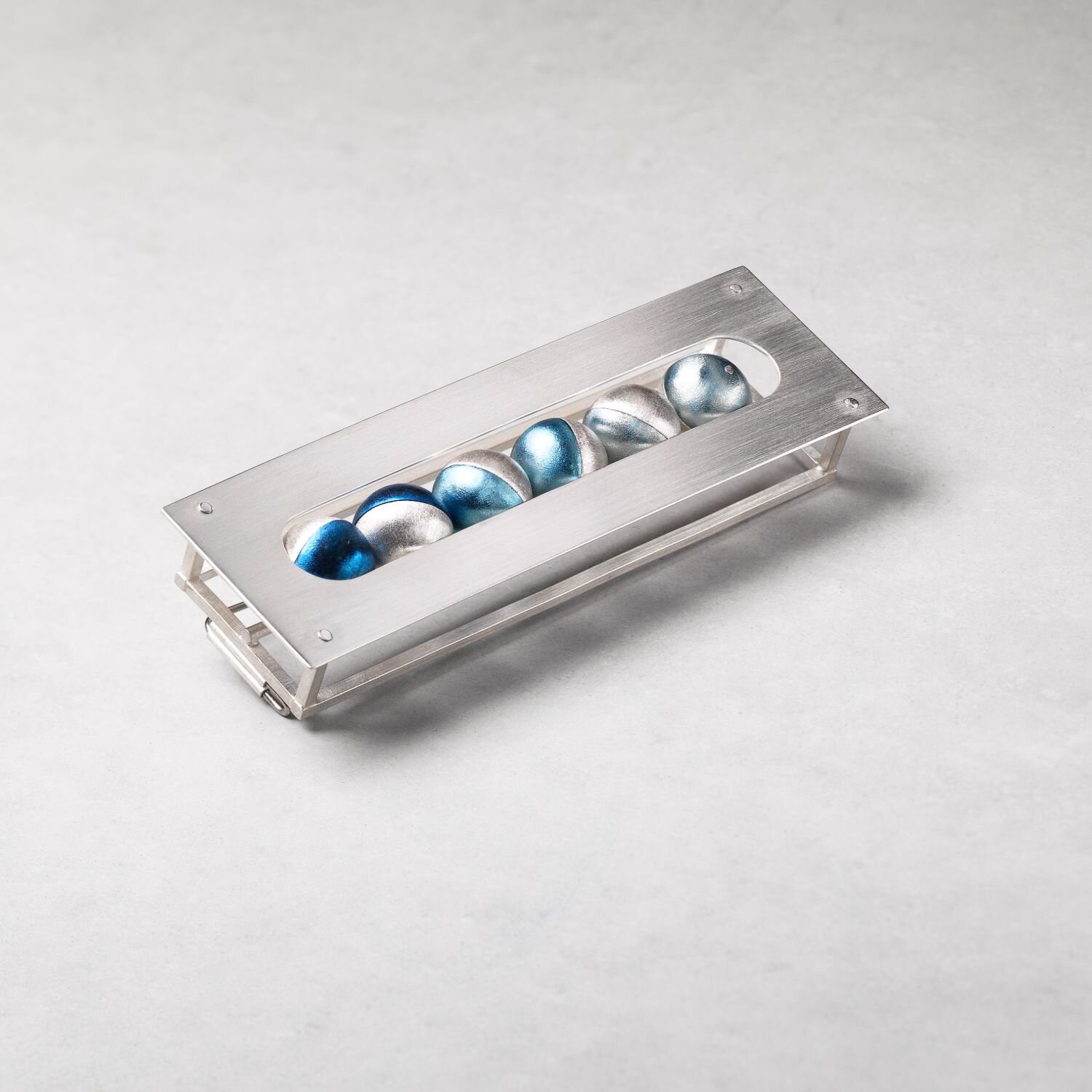
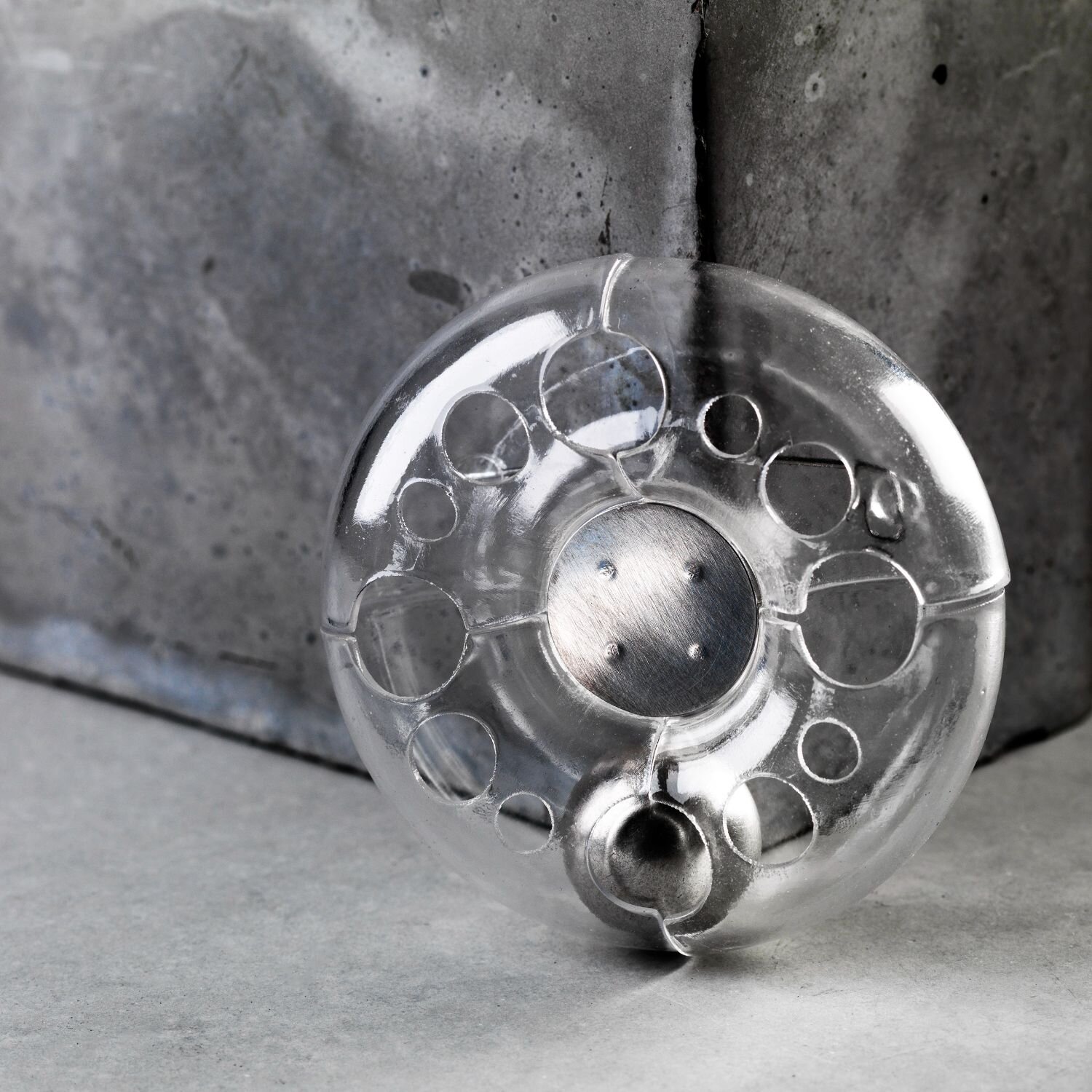

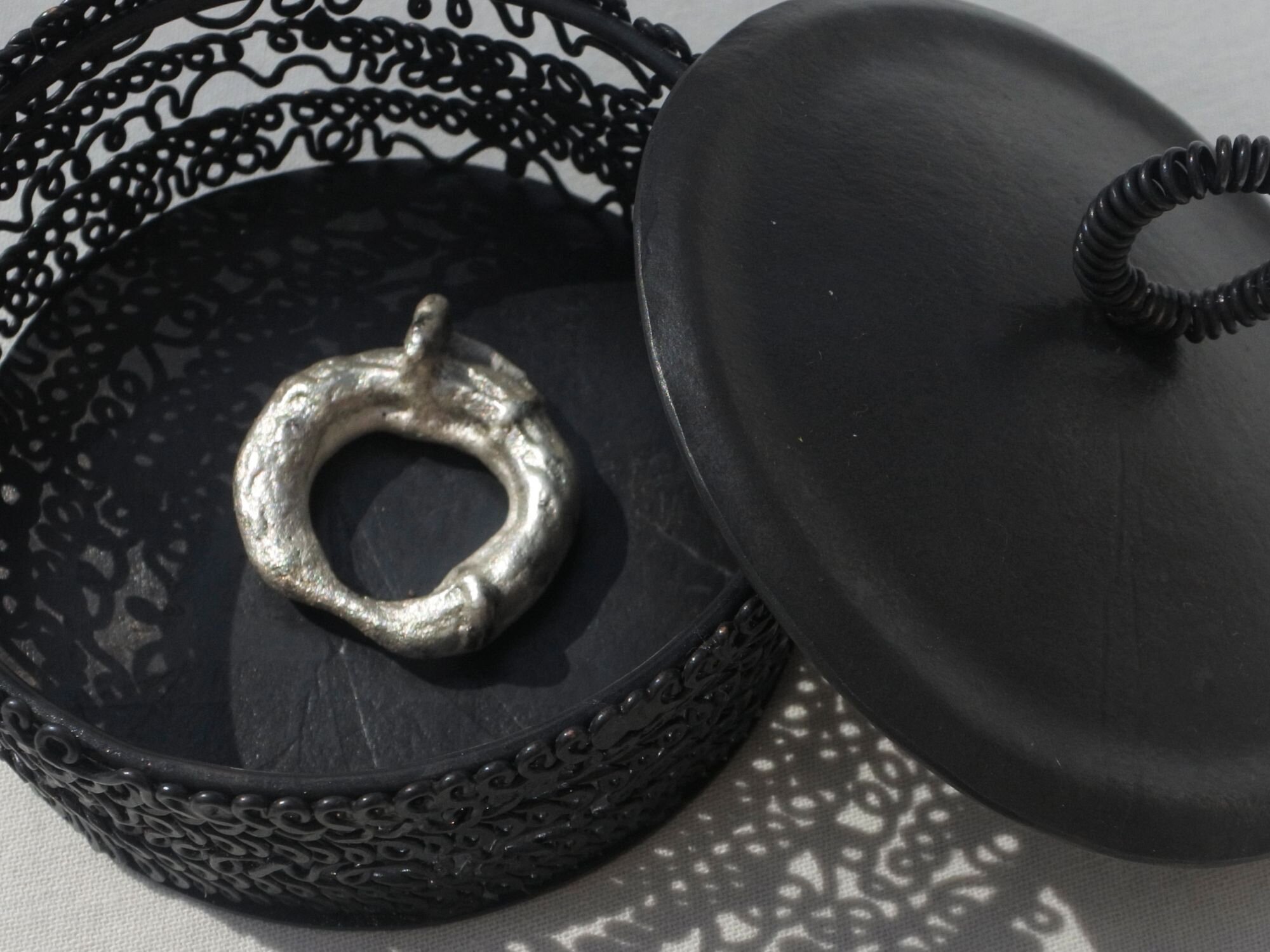
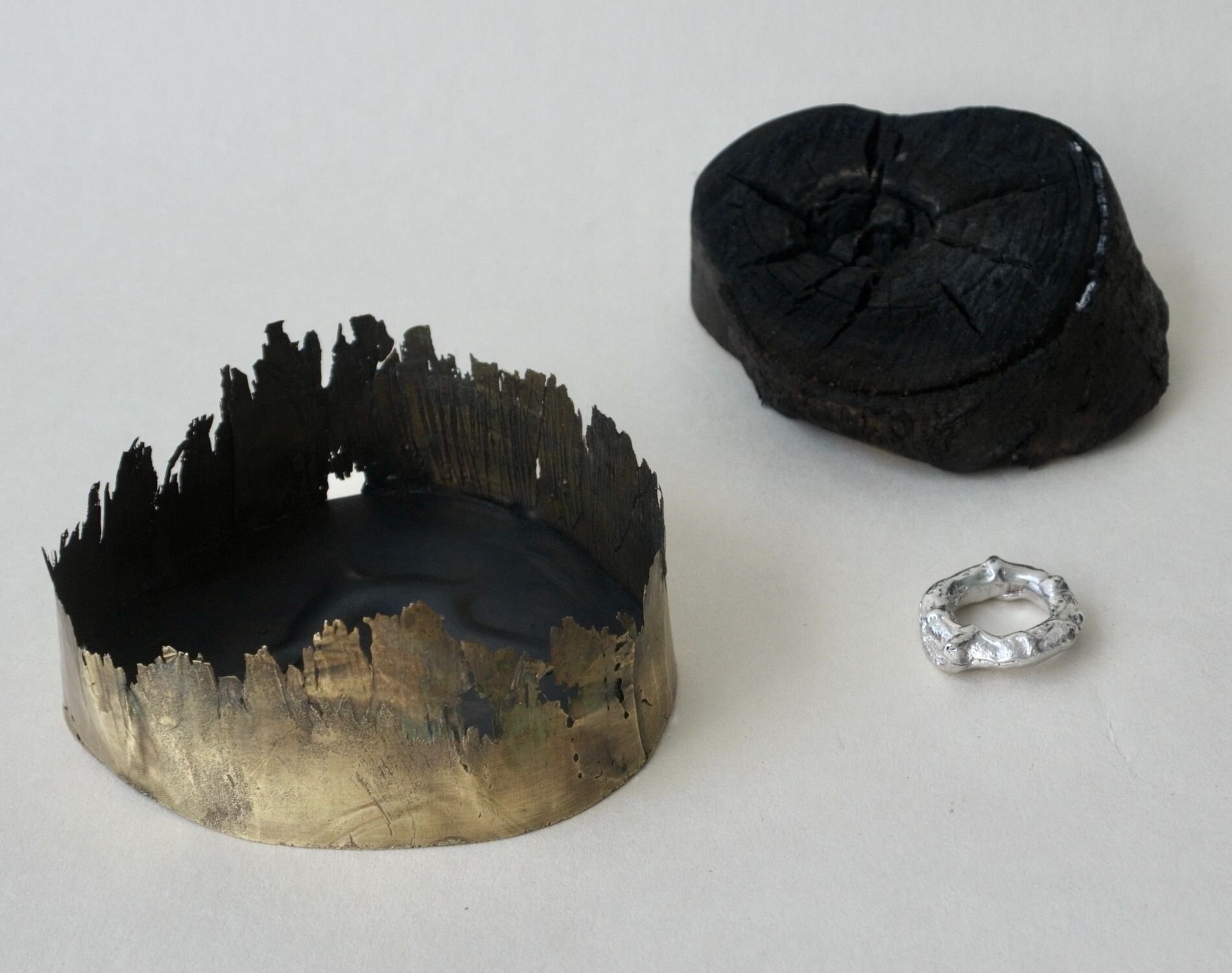
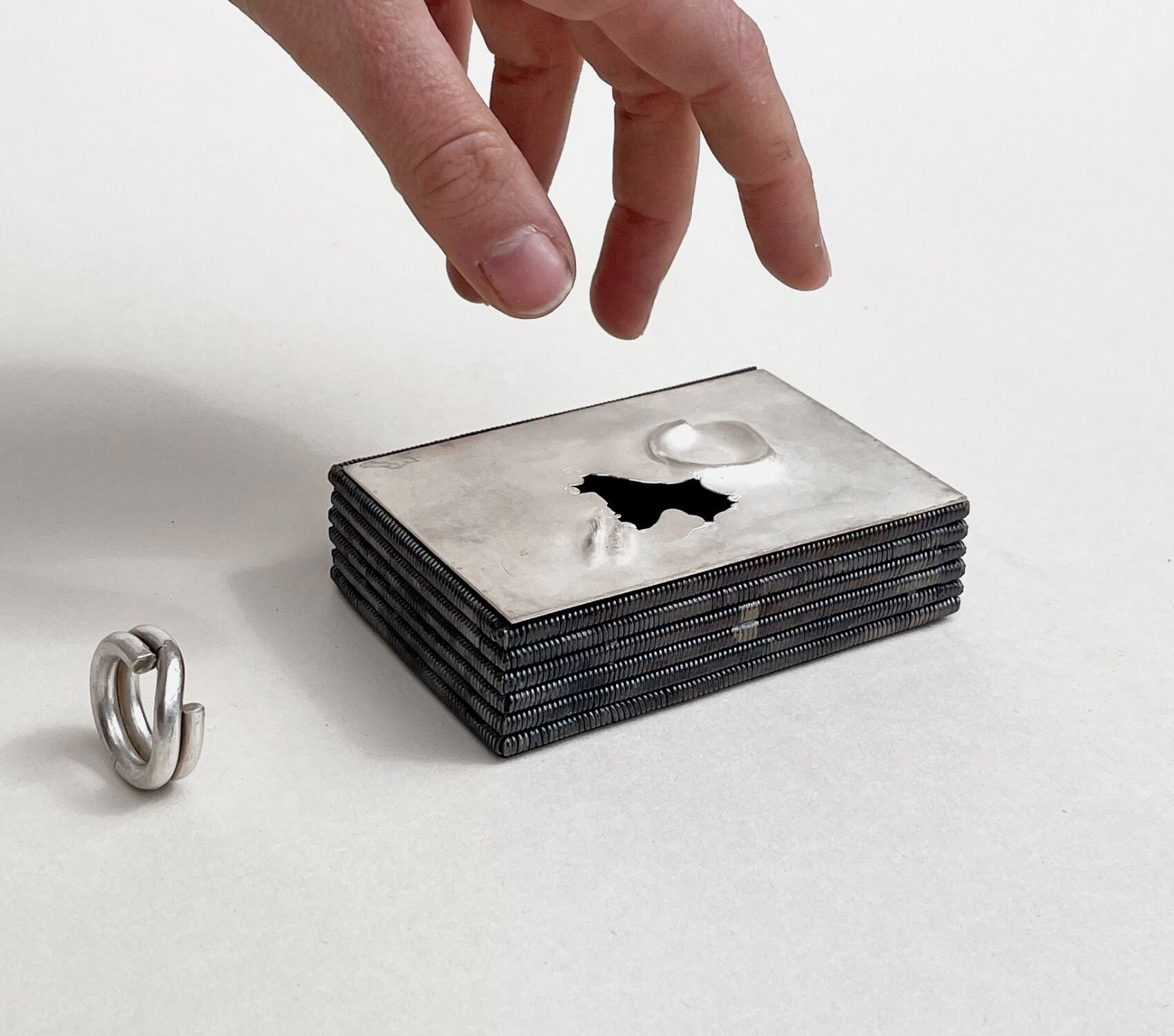

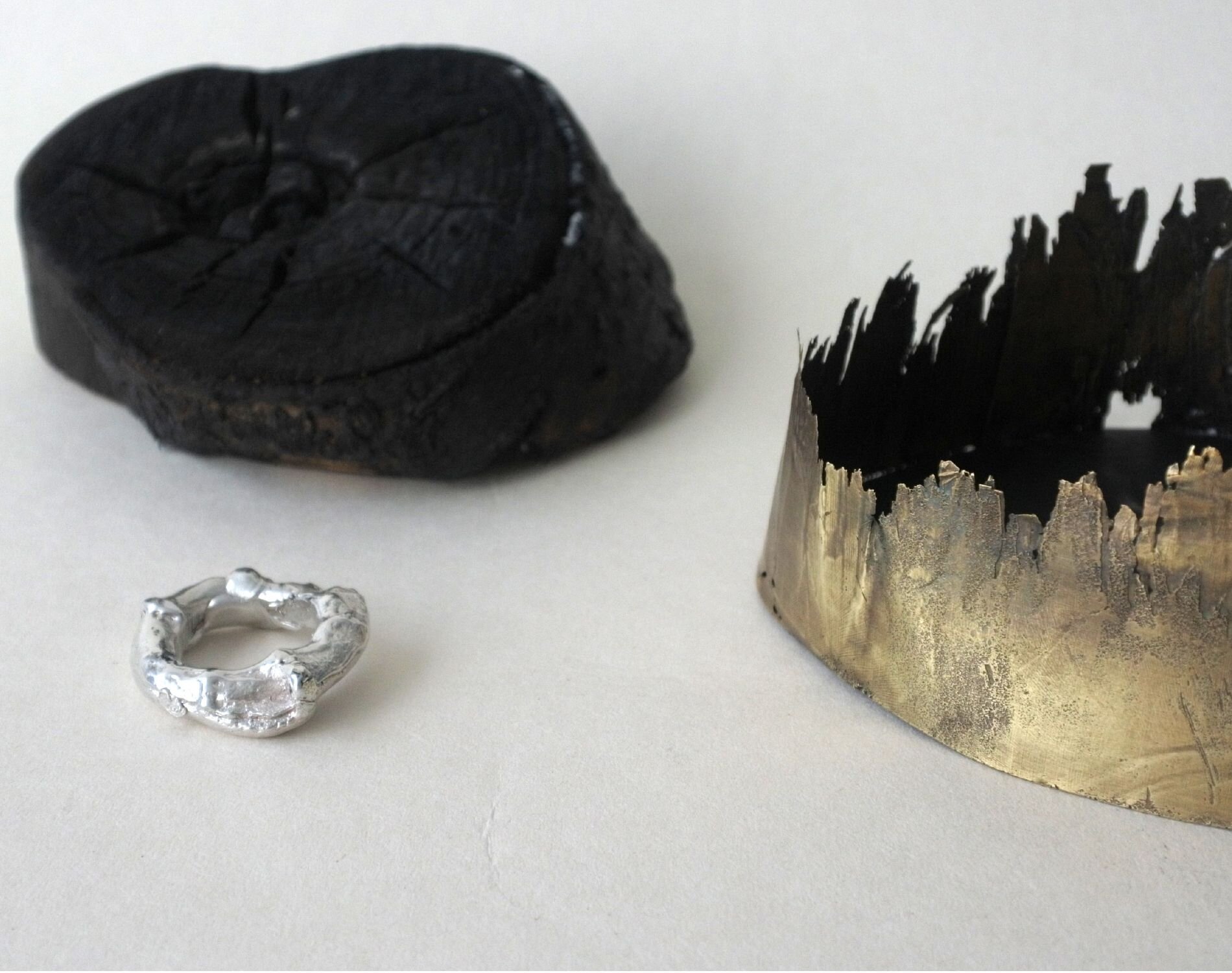
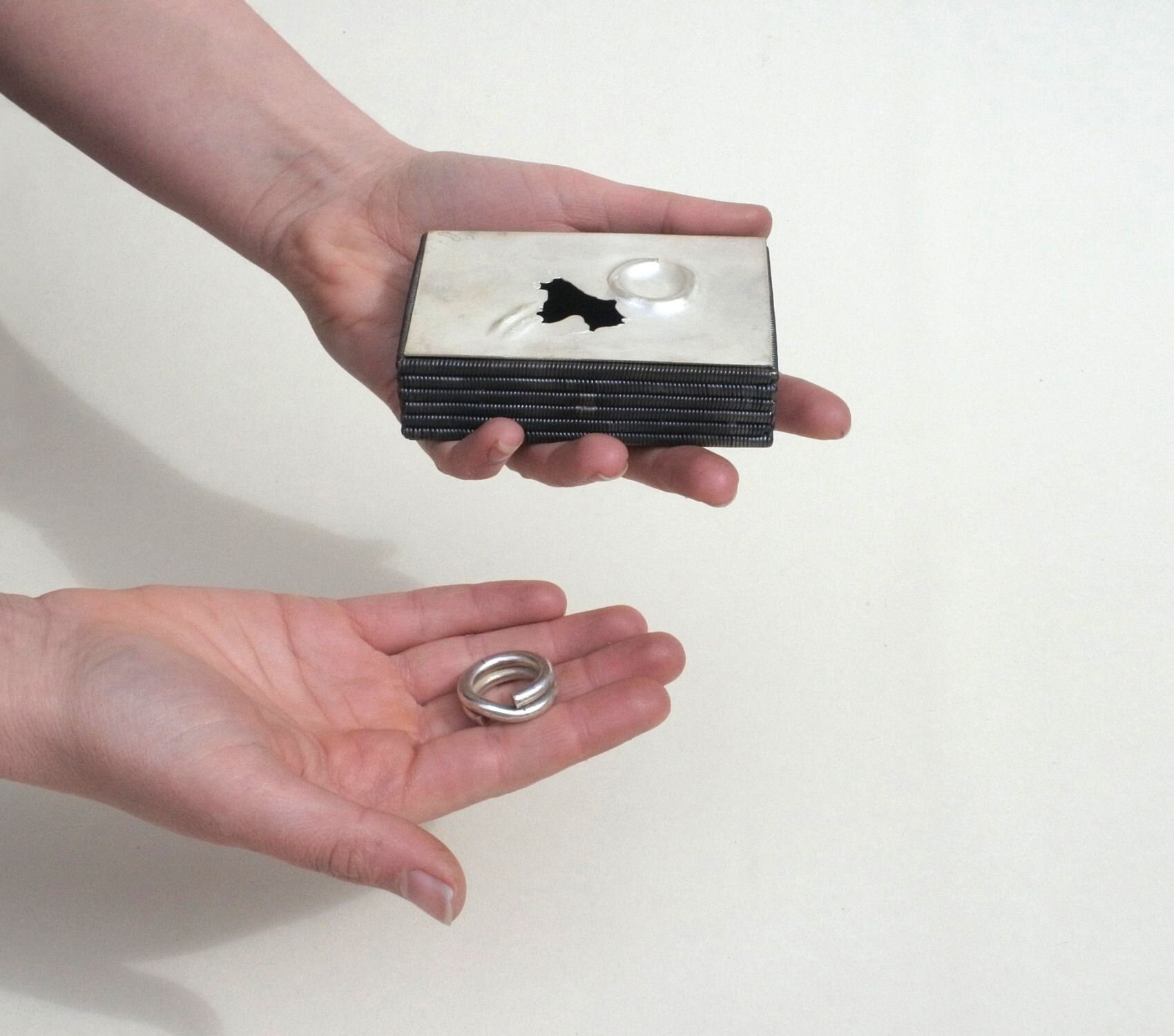
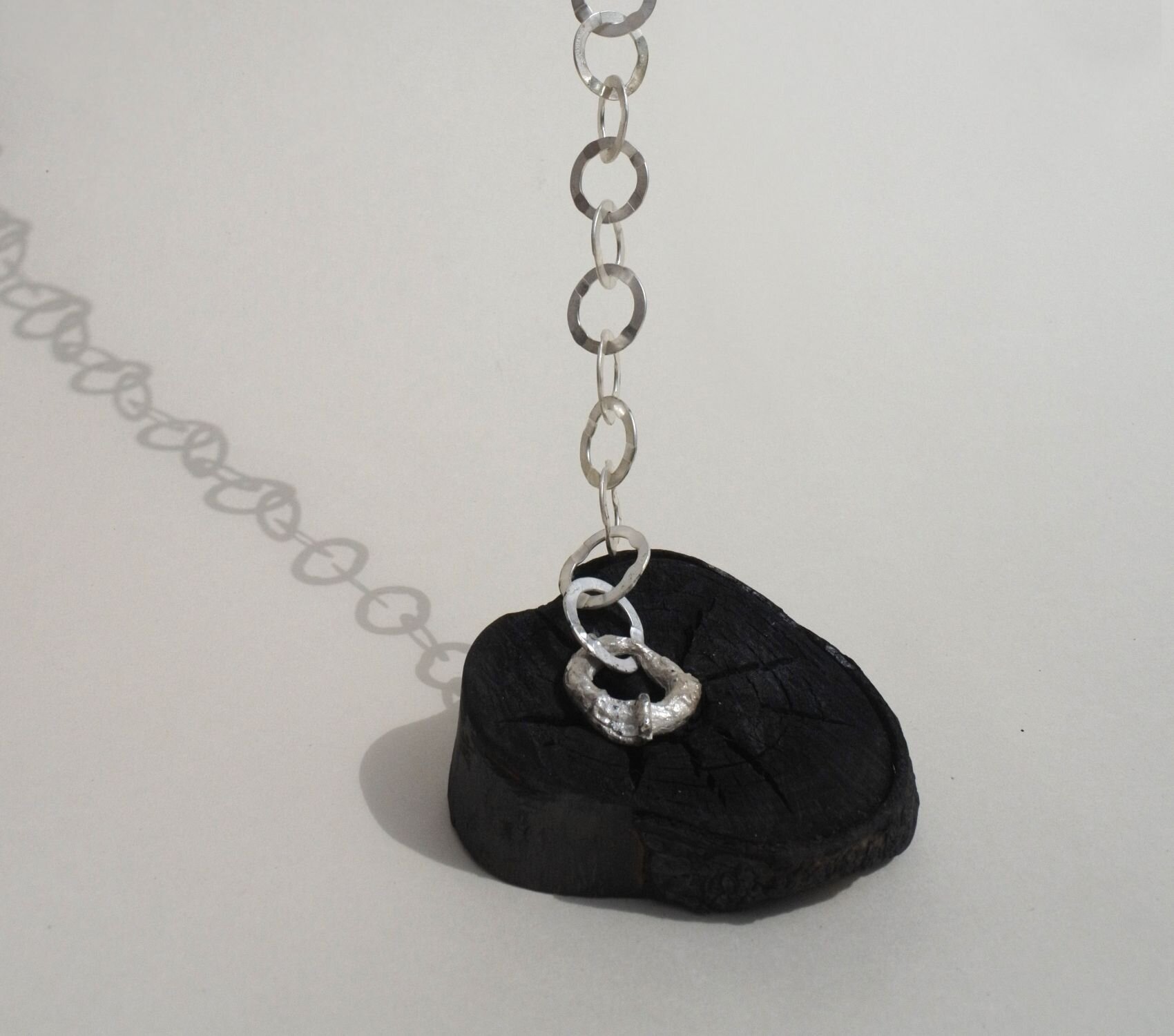



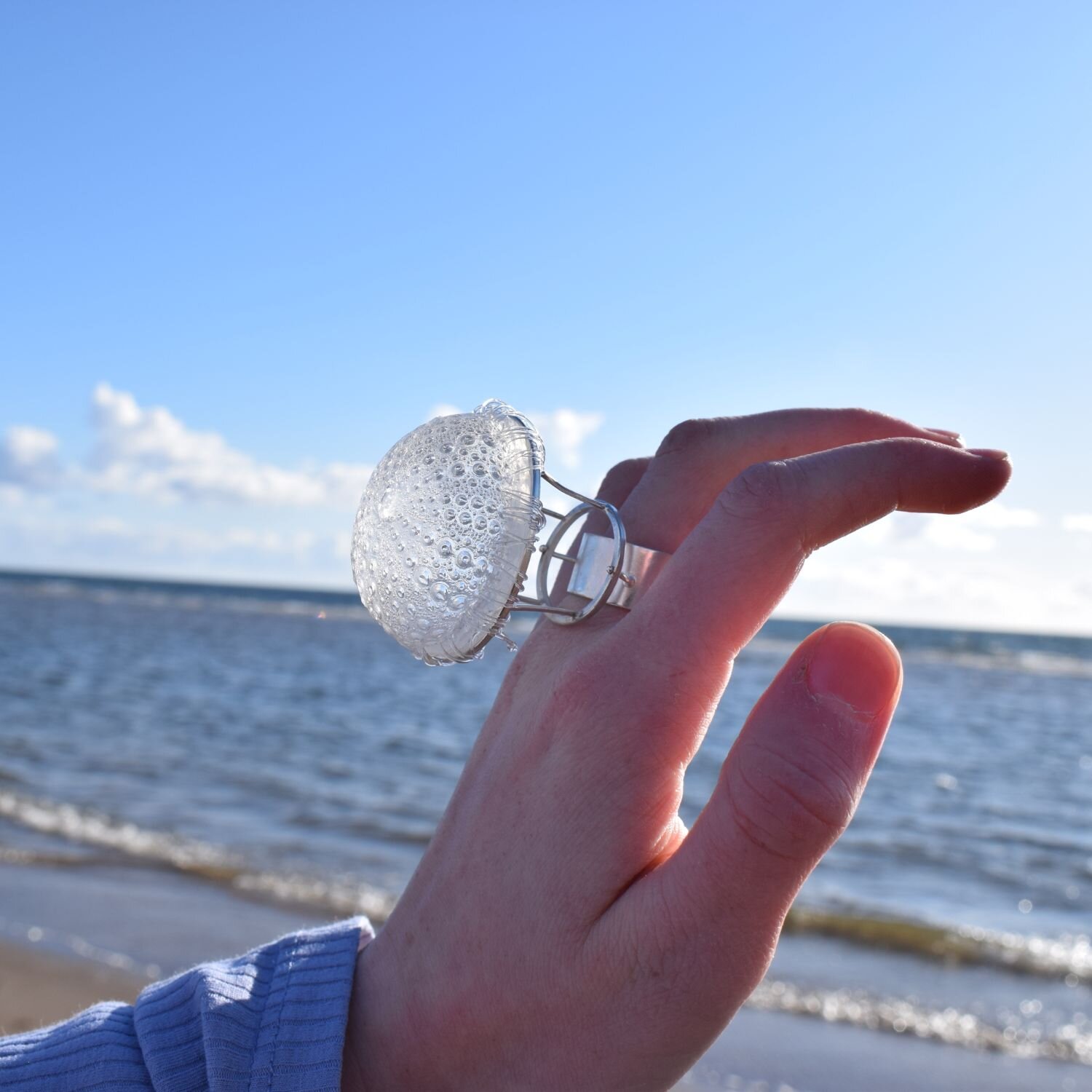



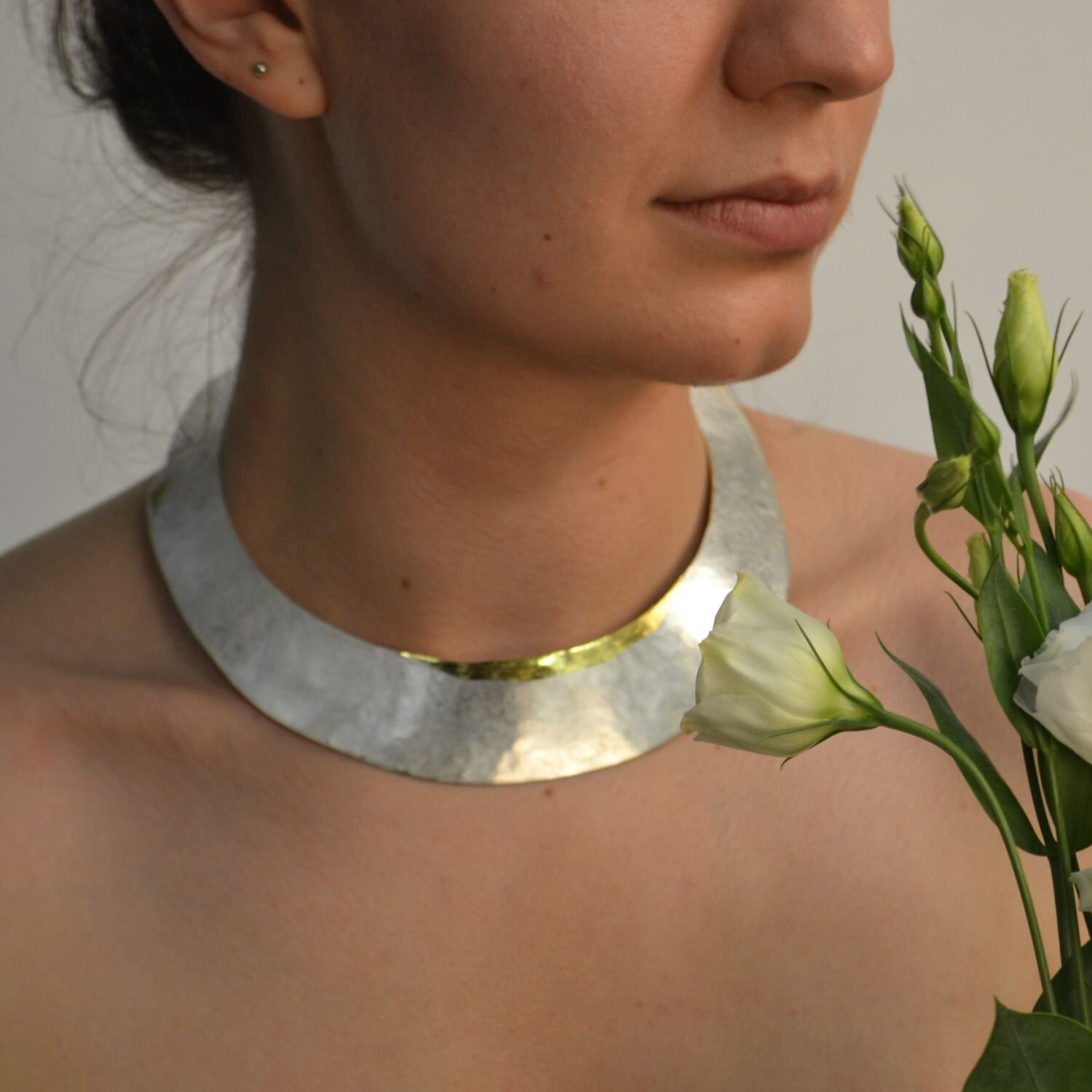

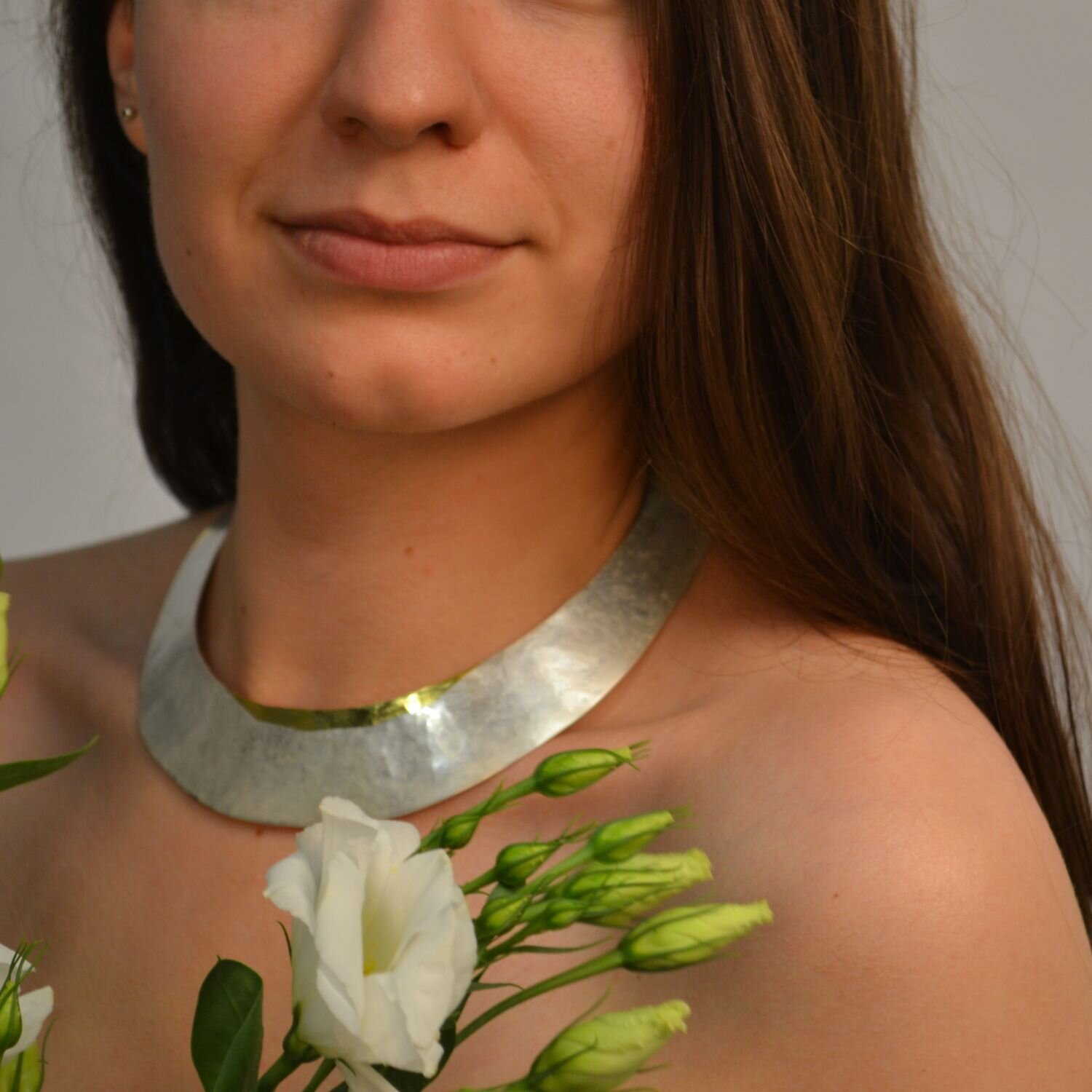
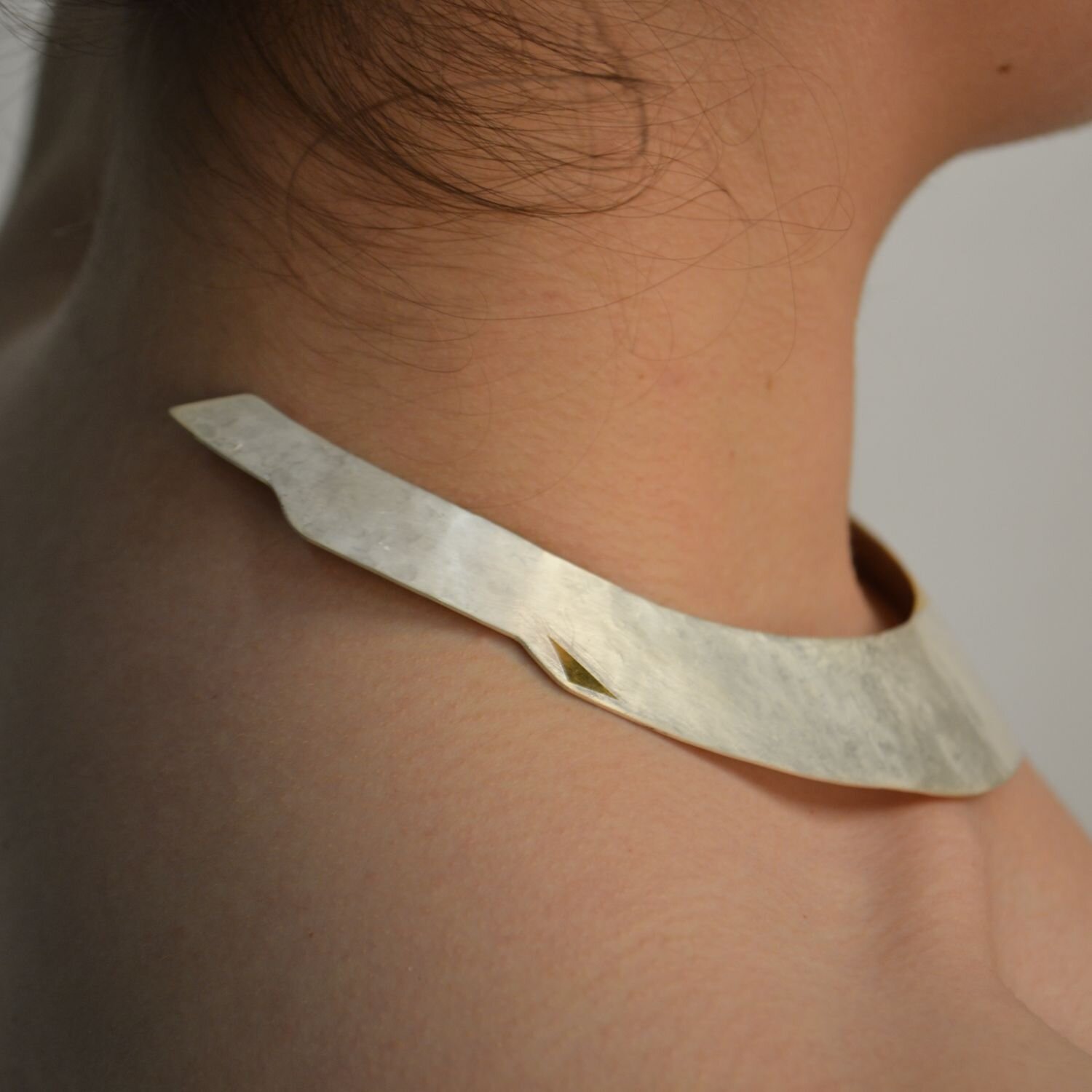
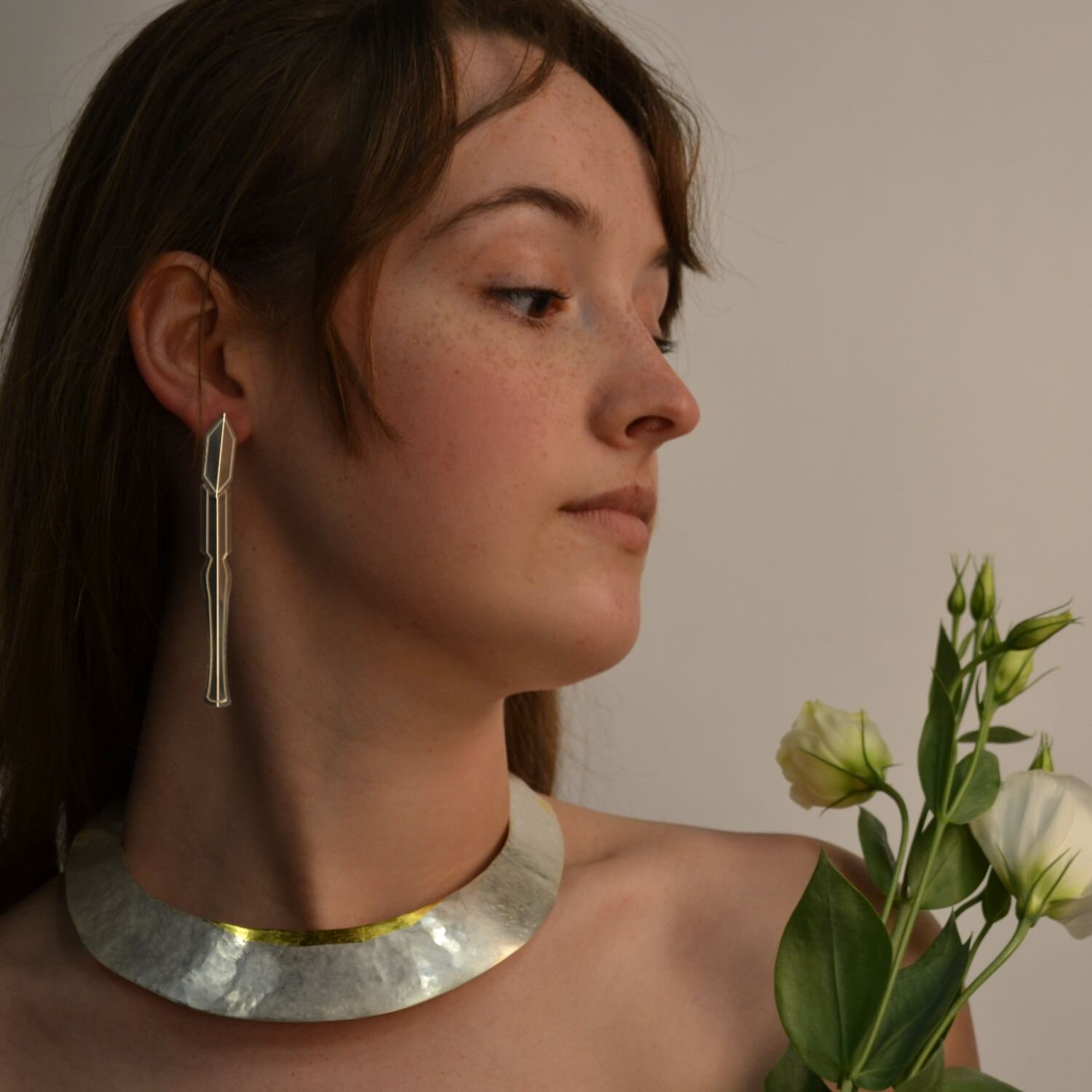


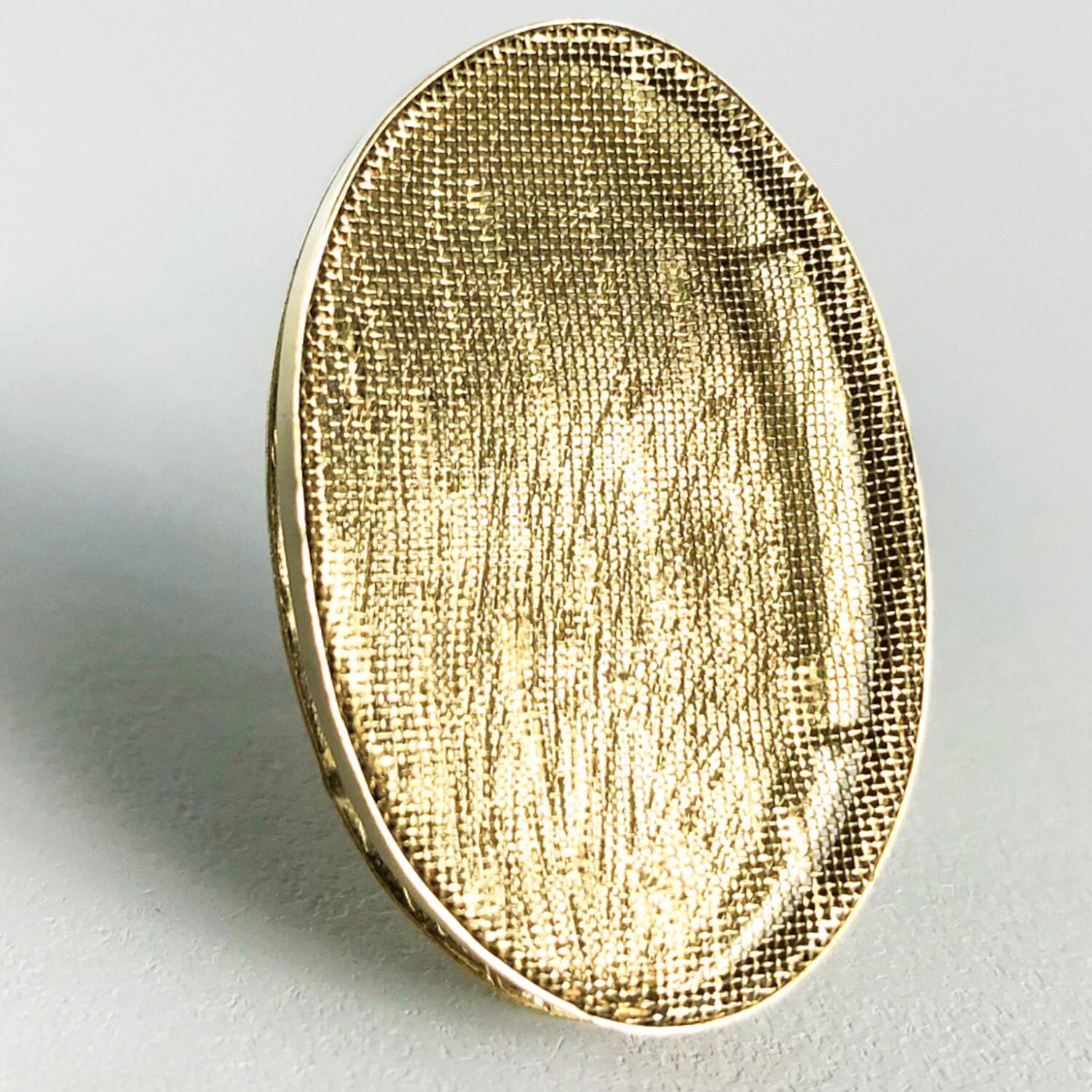
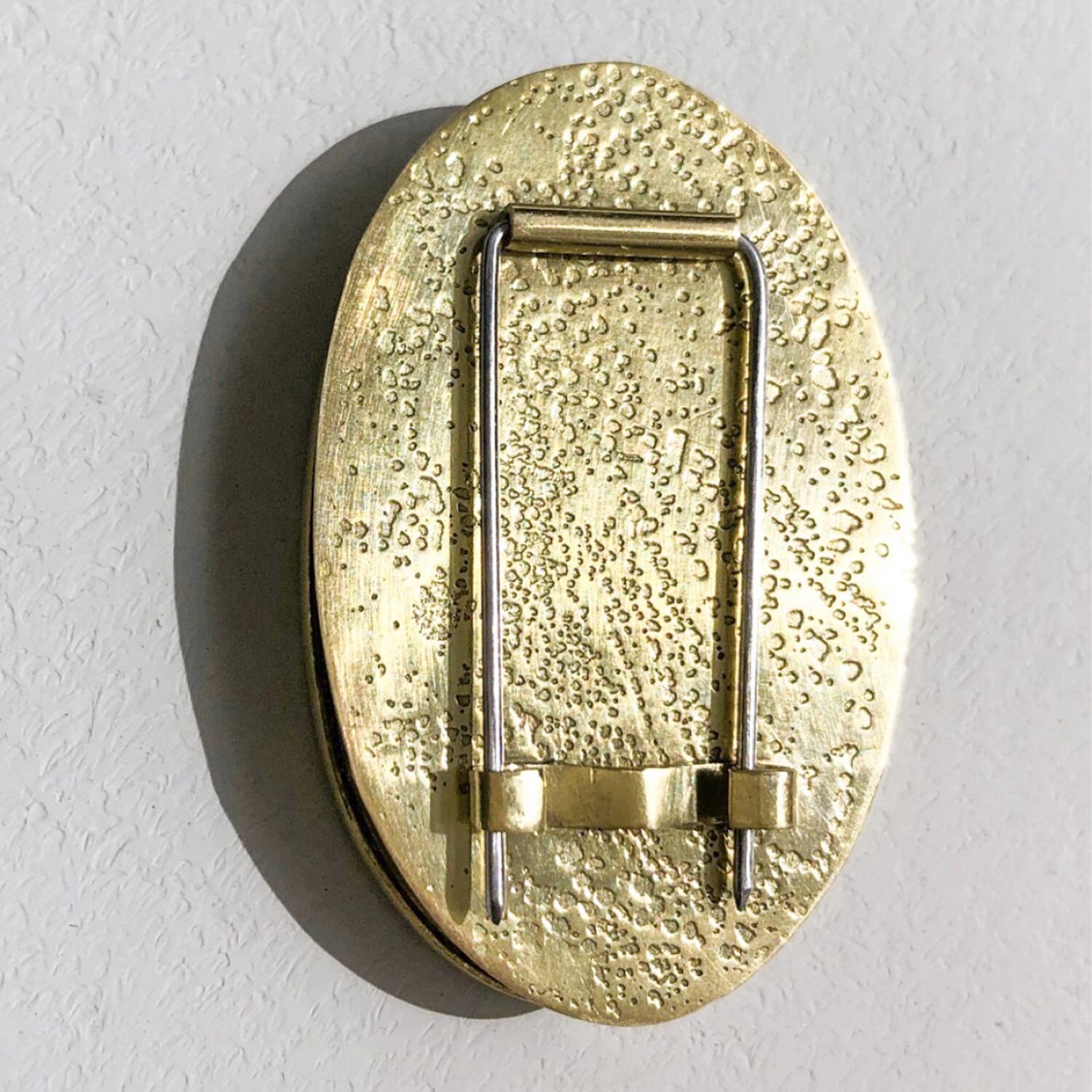
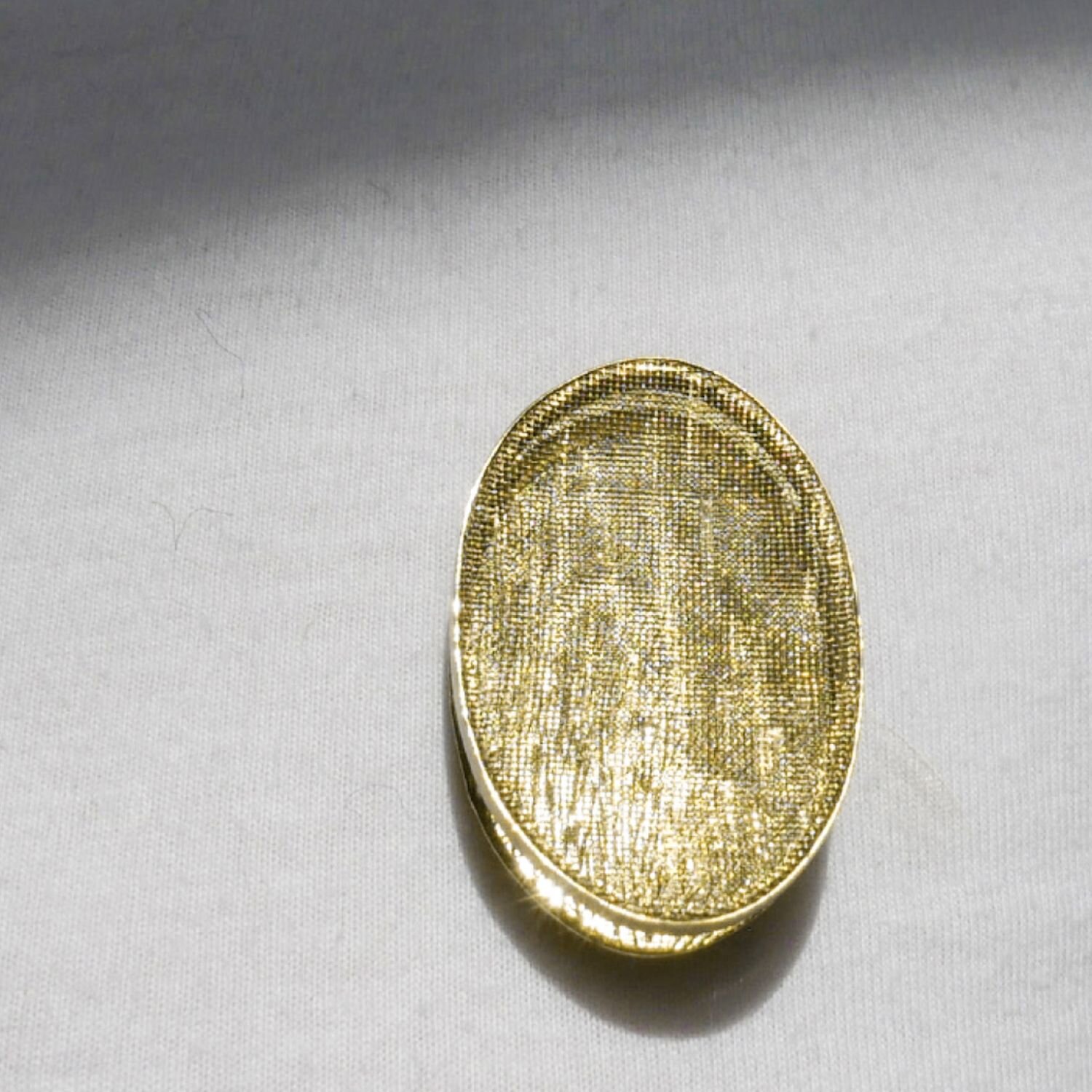
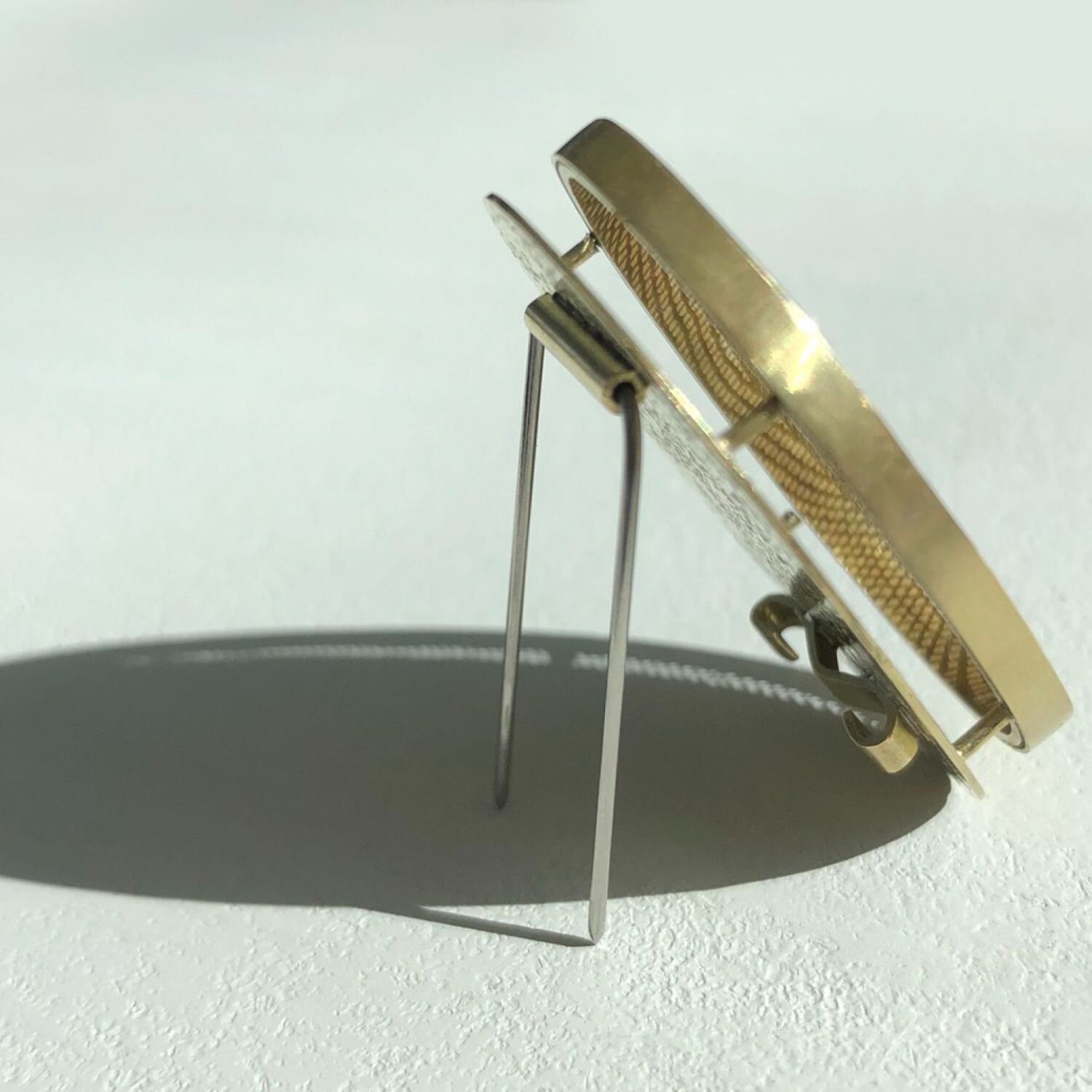
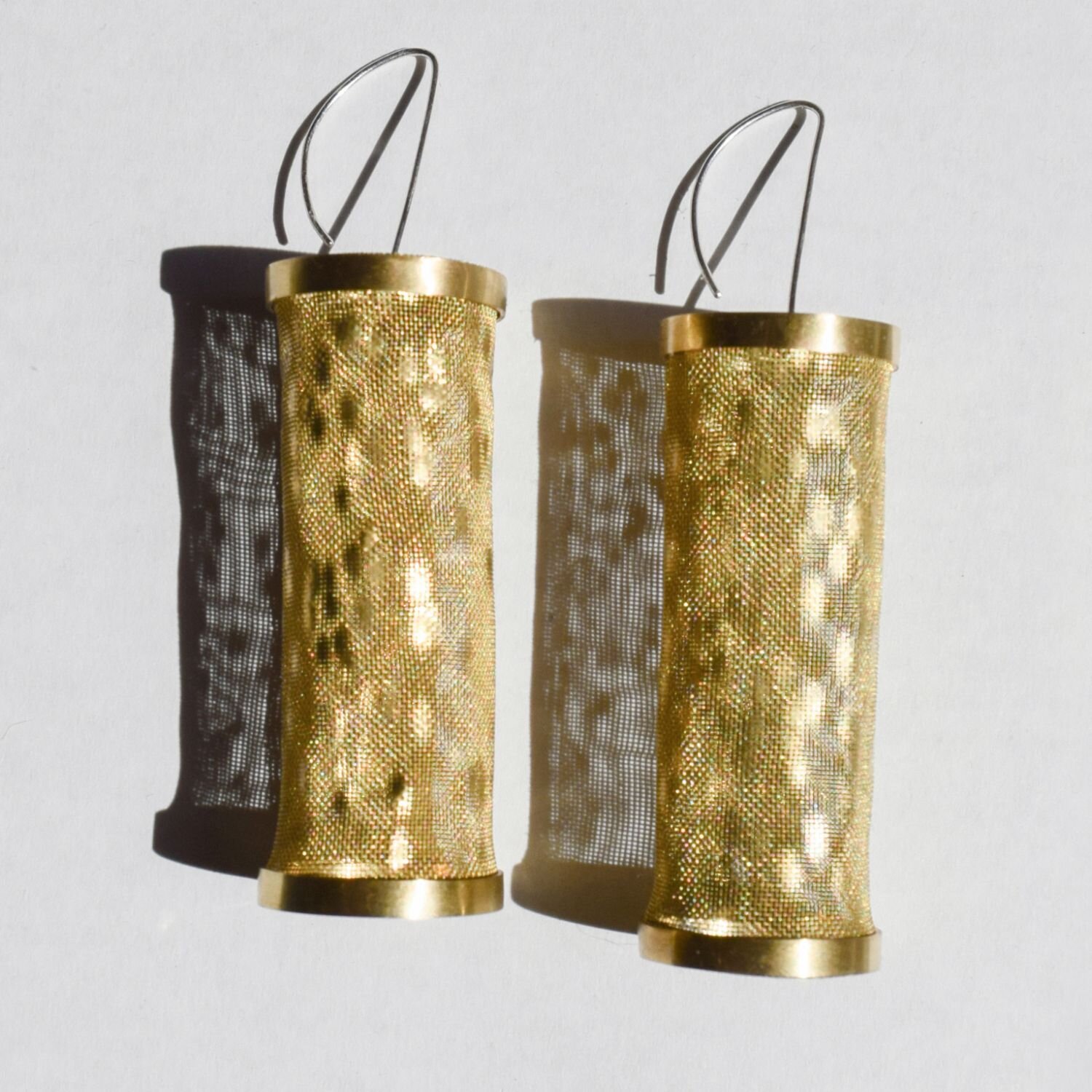
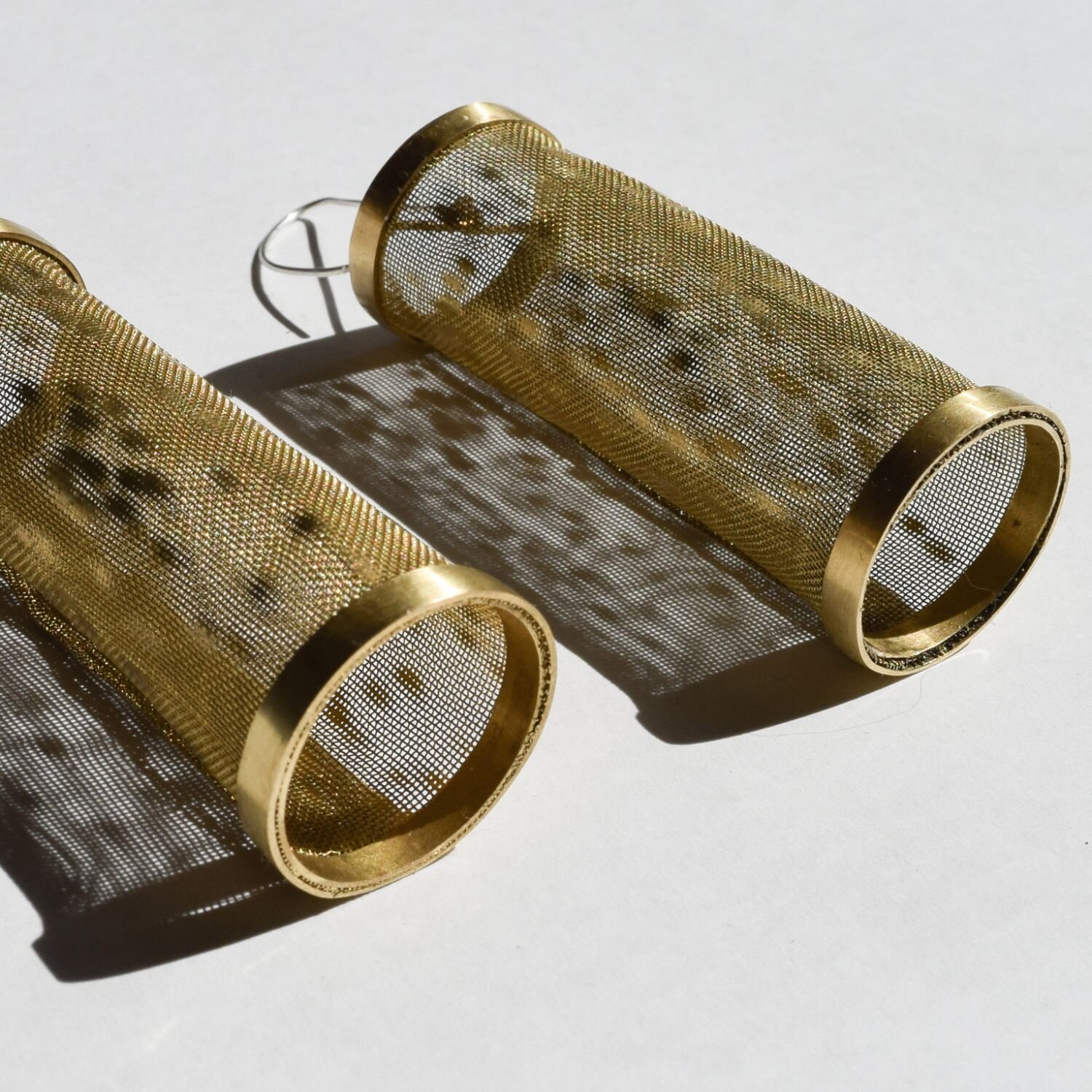
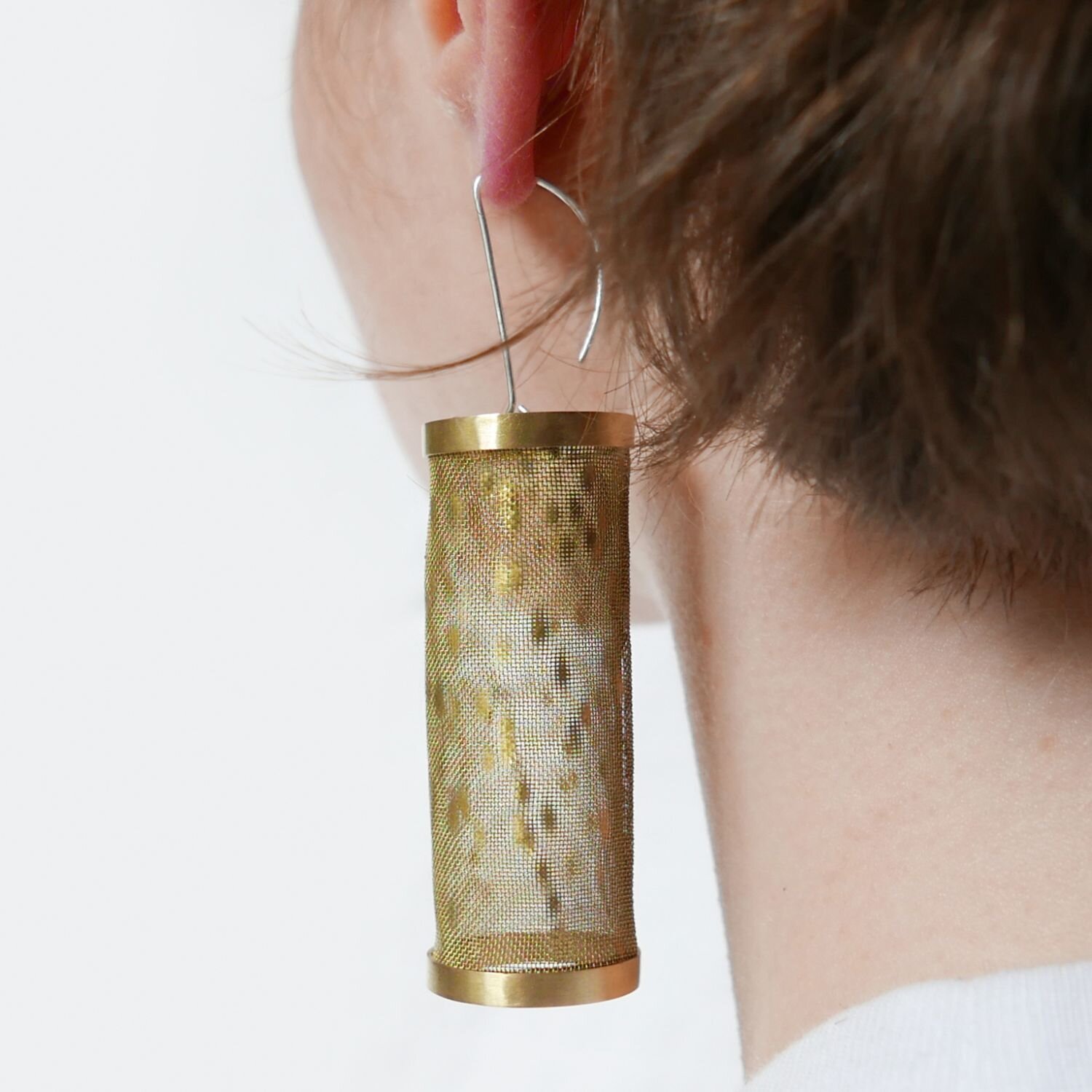
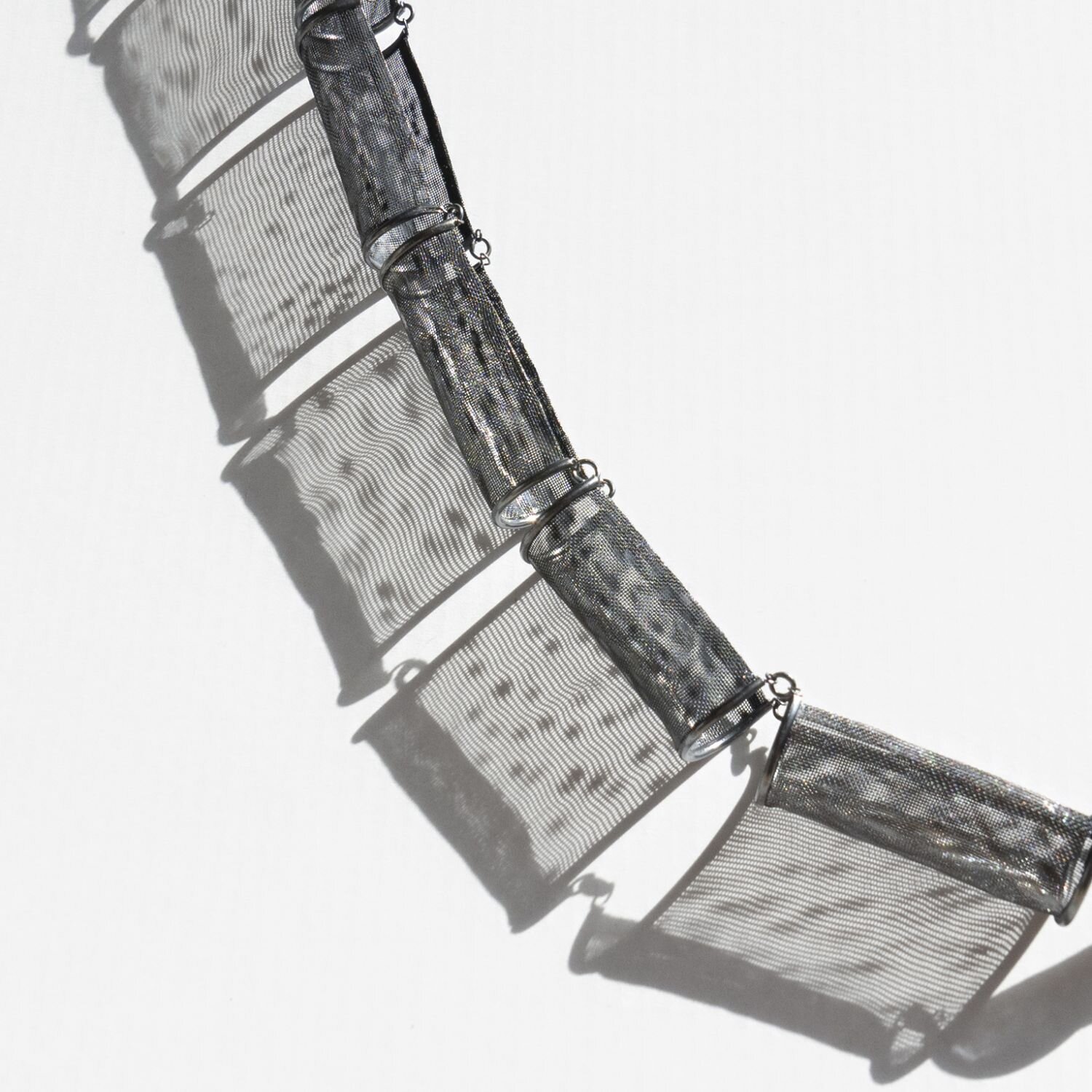
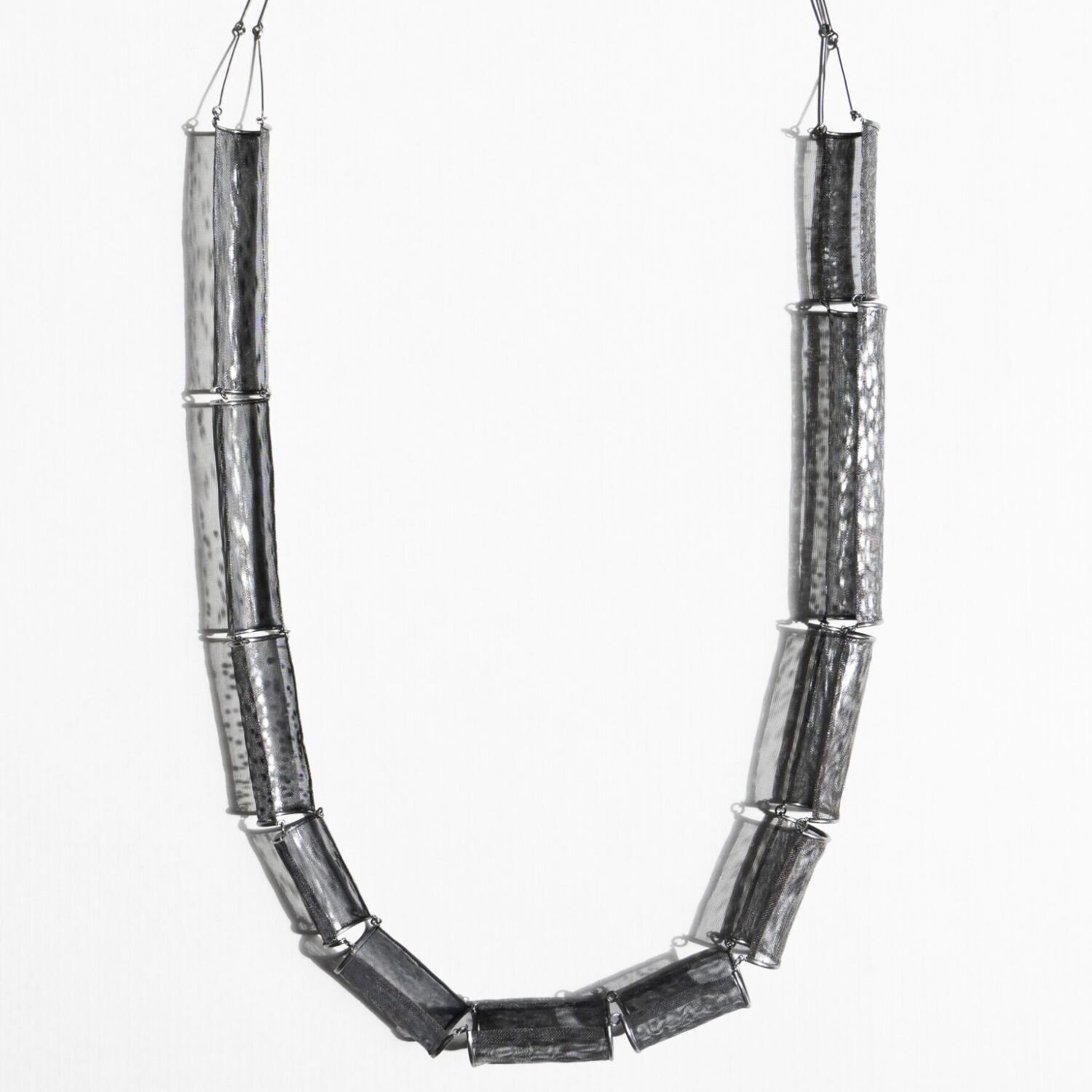






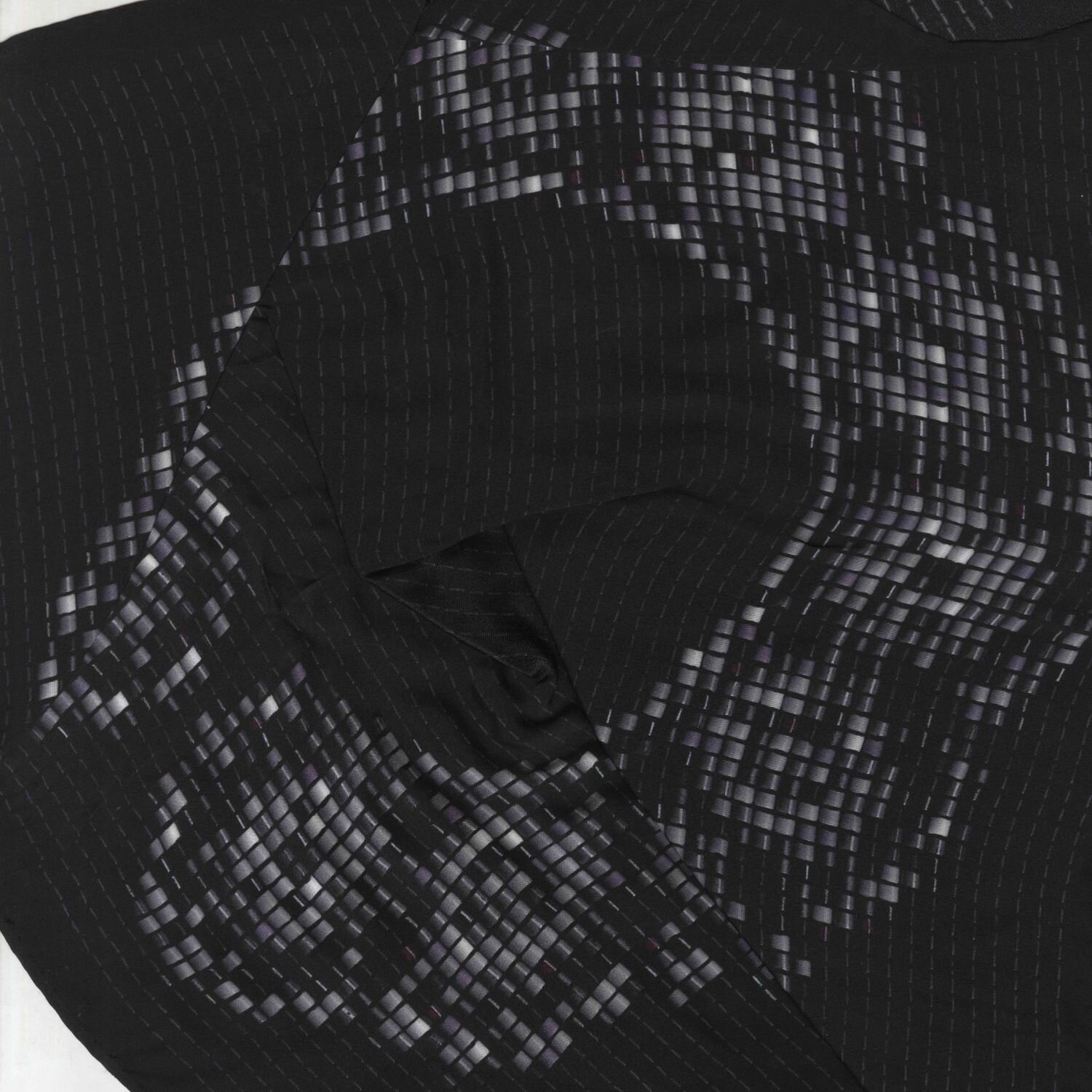


![MingyuShan_theshadowofgeometry1[1].jpg](https://images.squarespace-cdn.com/content/v1/5f0c48bede76c9696a56c010/1632137930857-LGP1VYV1I7WK2X9AL4YP/MingyuShan_theshadowofgeometry1%5B1%5D.jpg)
![MingyuShan_theshadowofgeometry2[1].jpg](https://images.squarespace-cdn.com/content/v1/5f0c48bede76c9696a56c010/1632137931114-CS0YOLOMTJVUJ47KONX3/MingyuShan_theshadowofgeometry2%5B1%5D.jpg)
![MingyuShan_theshadowofgeometry3[1].jpg](https://images.squarespace-cdn.com/content/v1/5f0c48bede76c9696a56c010/1632137931695-LH56O8F3QYPCTI0ZJ78C/MingyuShan_theshadowofgeometry3%5B1%5D.jpg)
